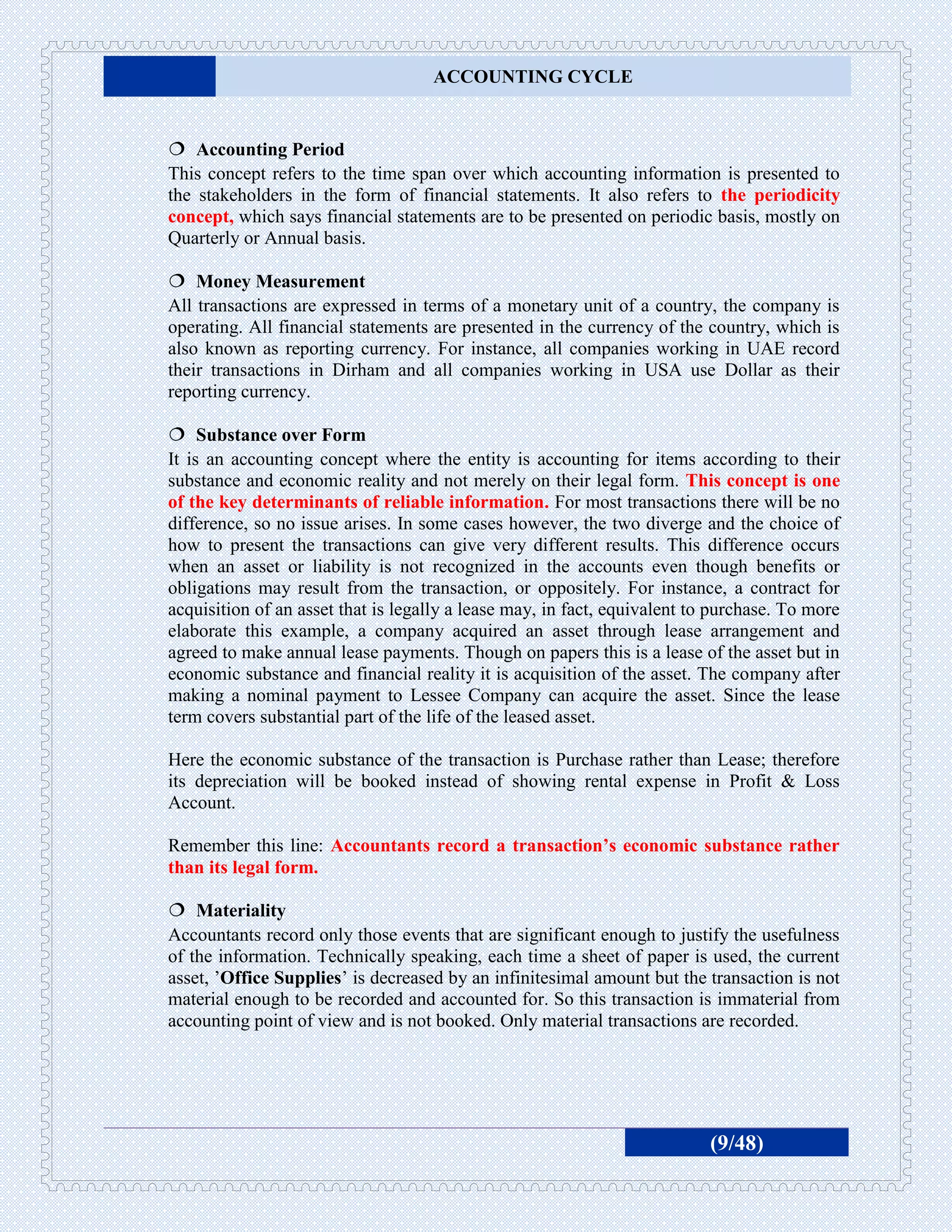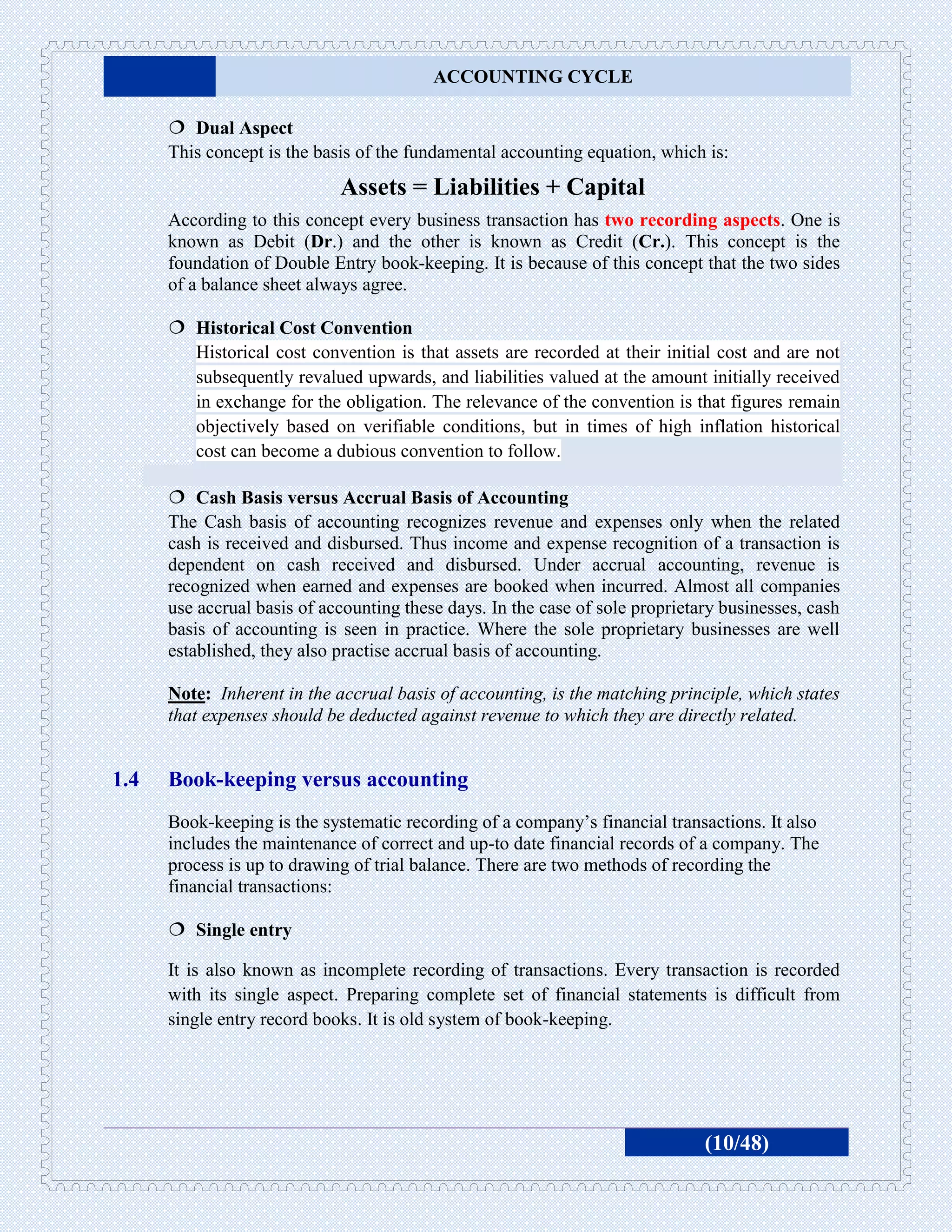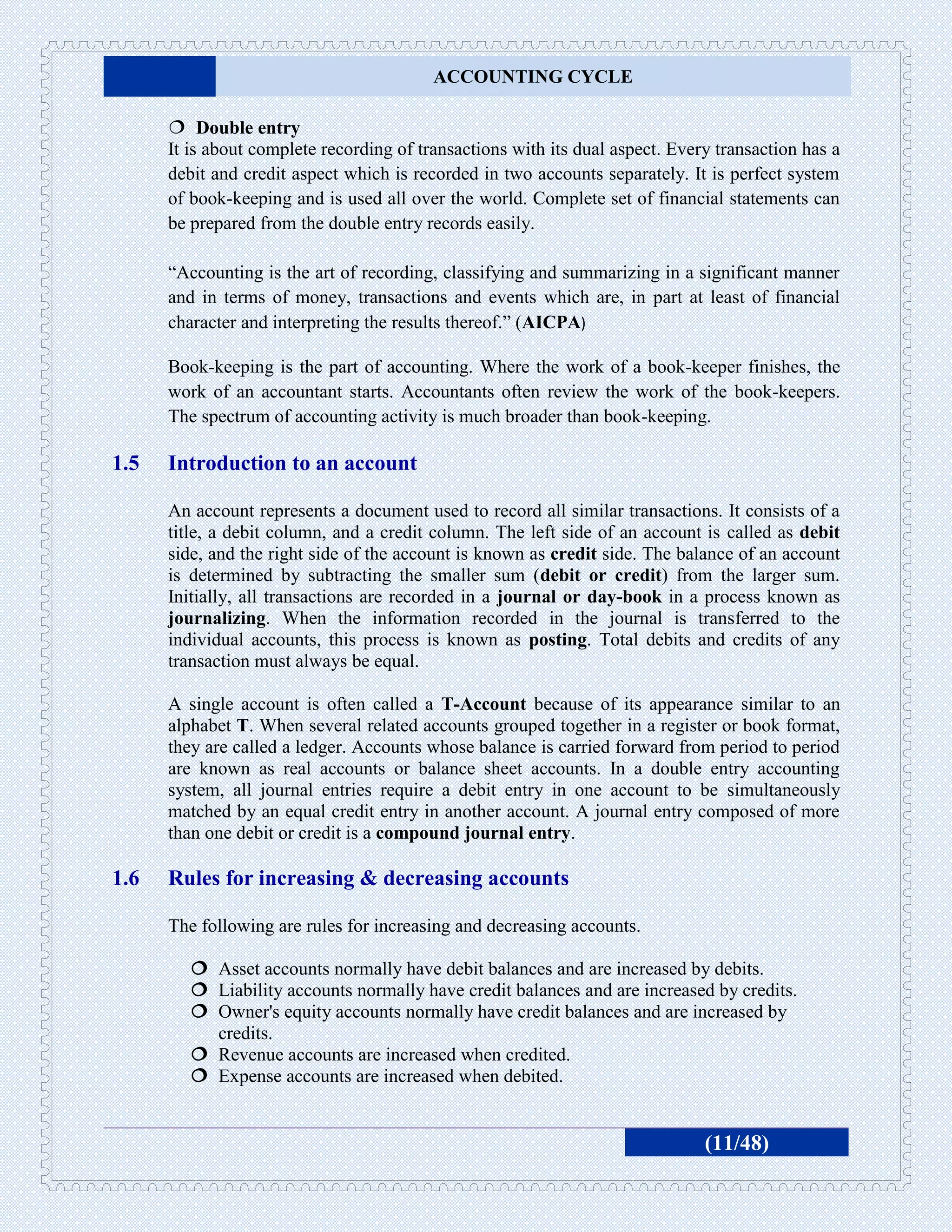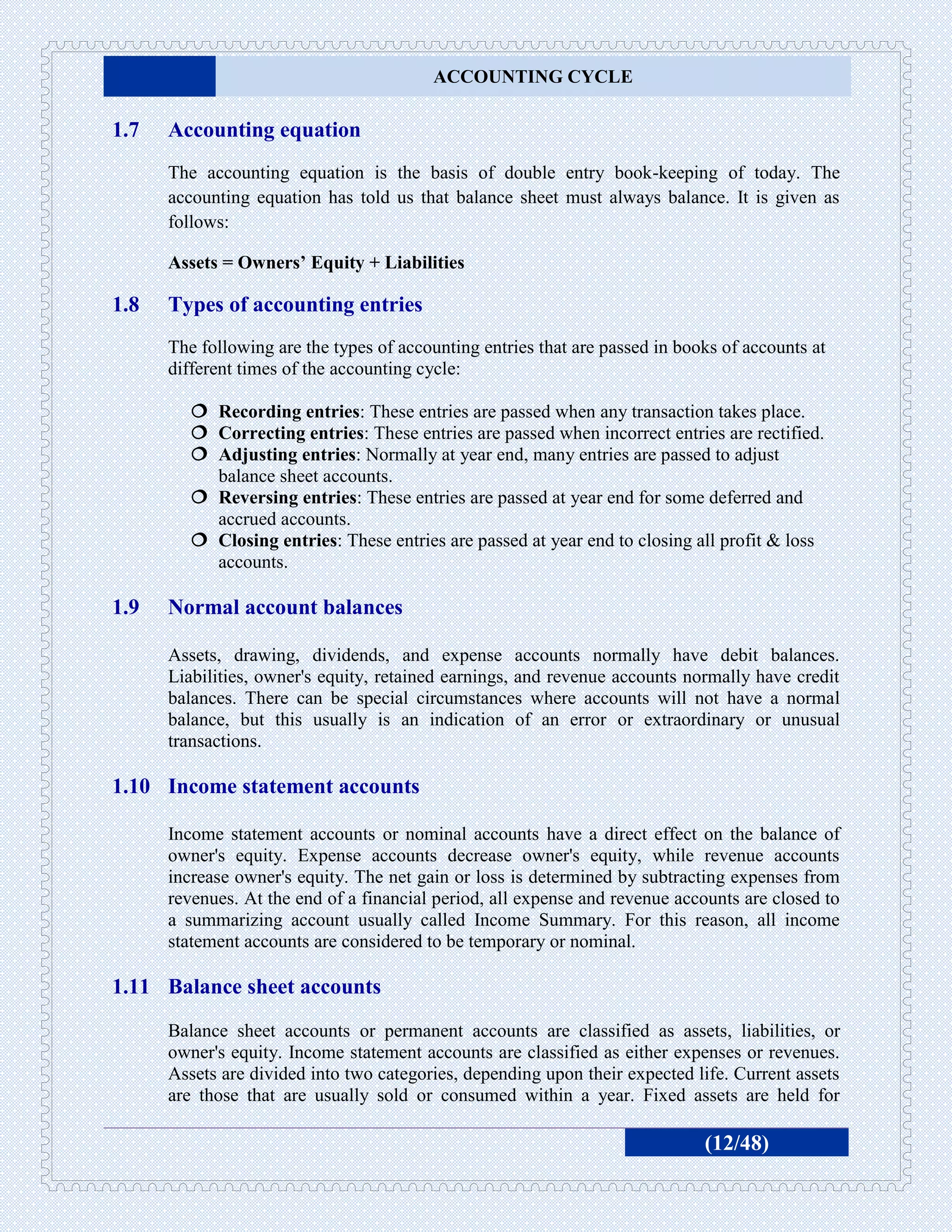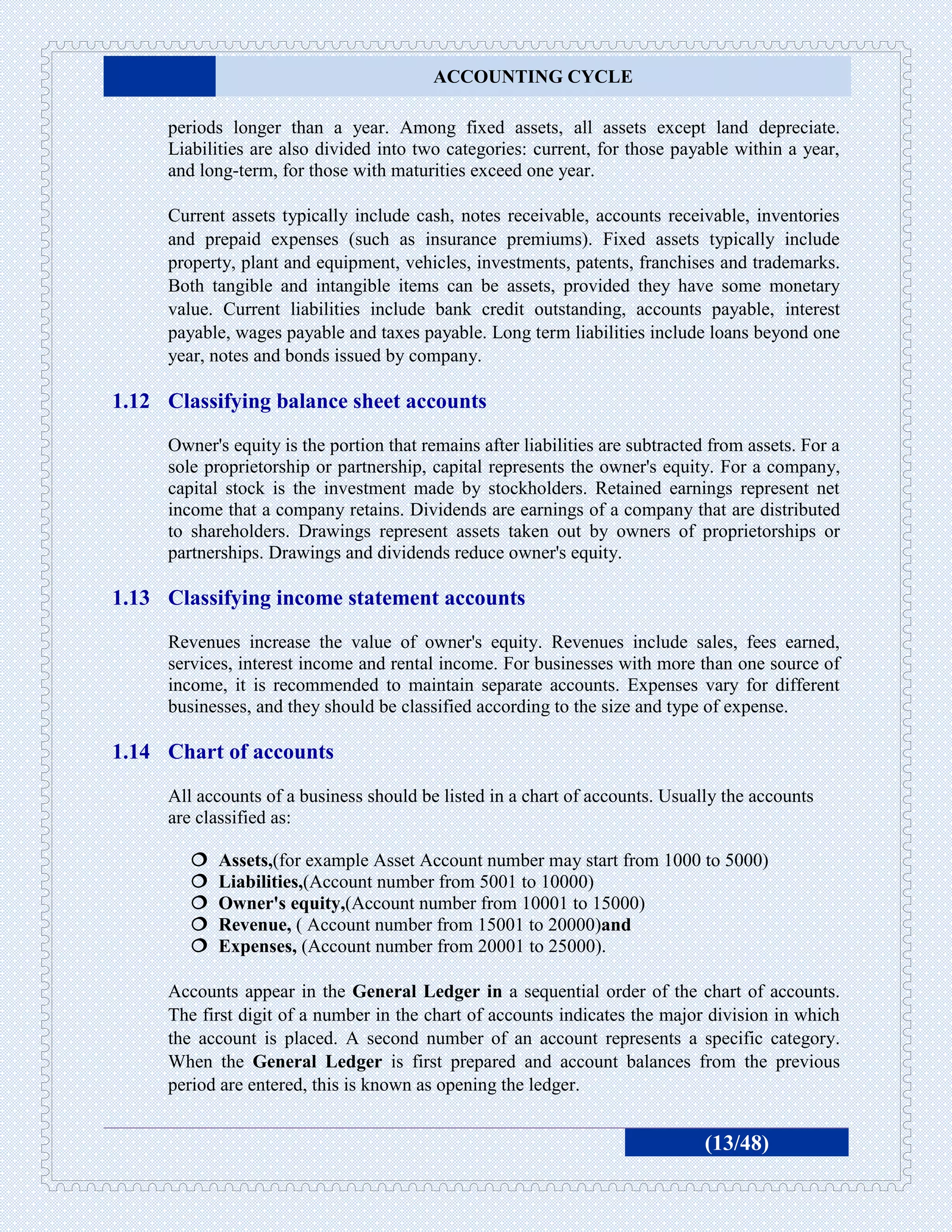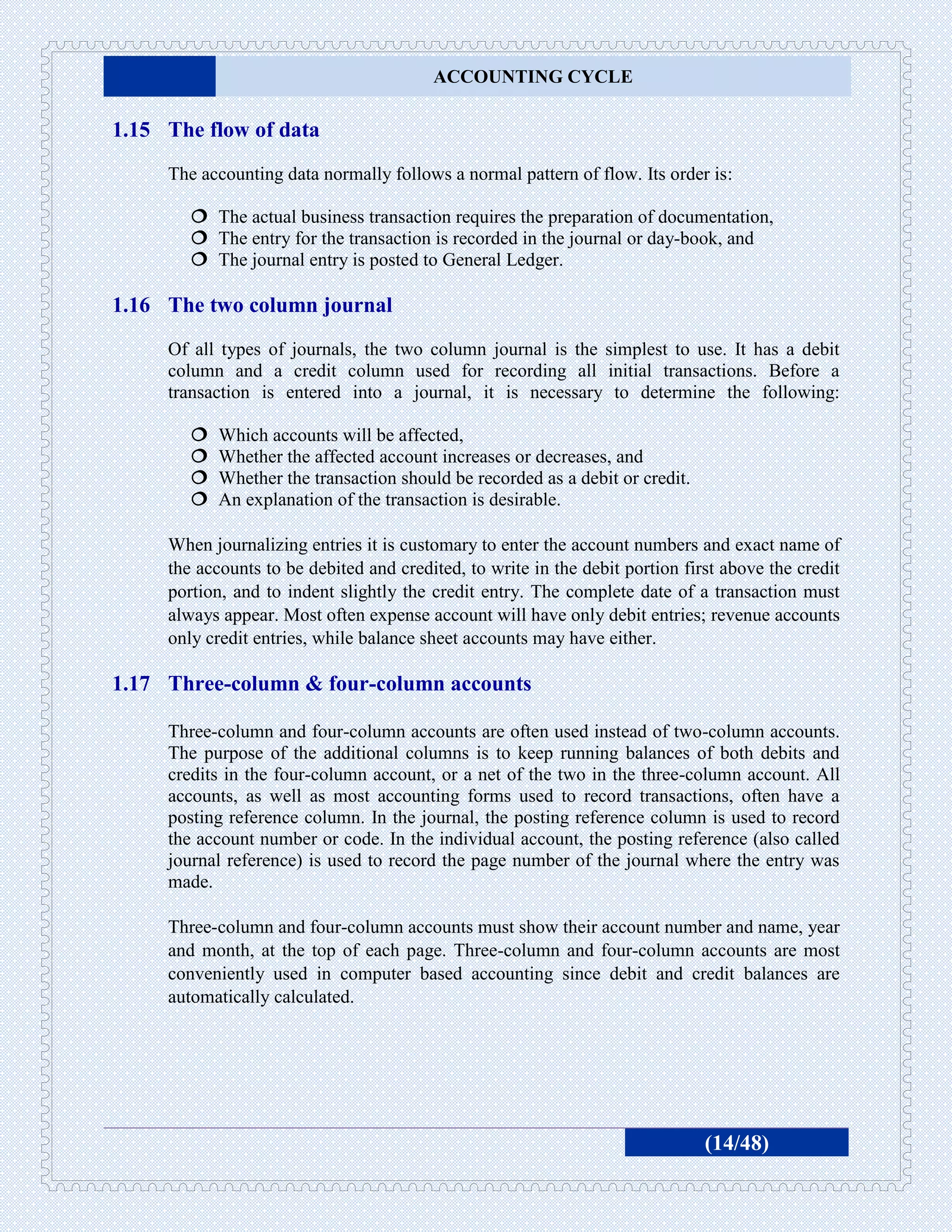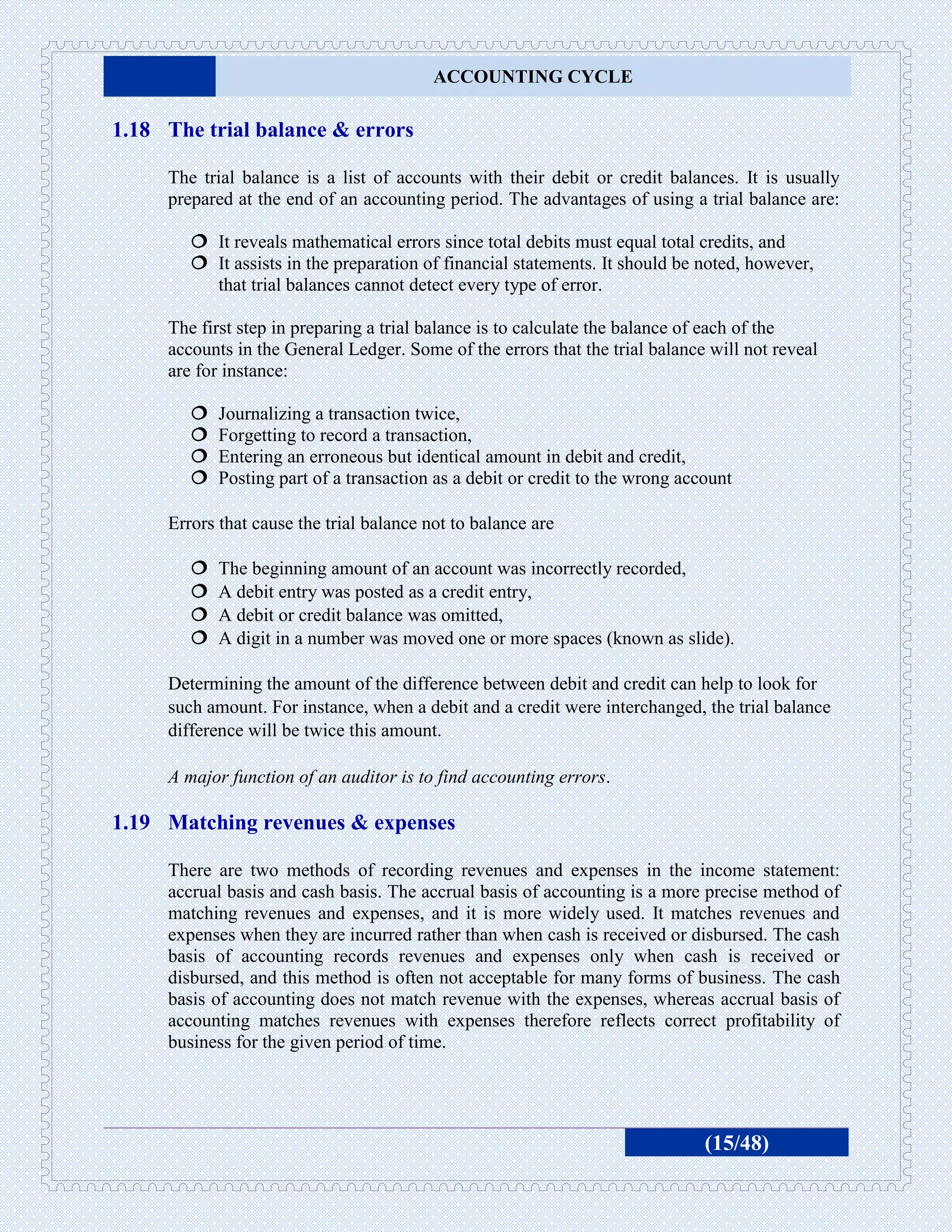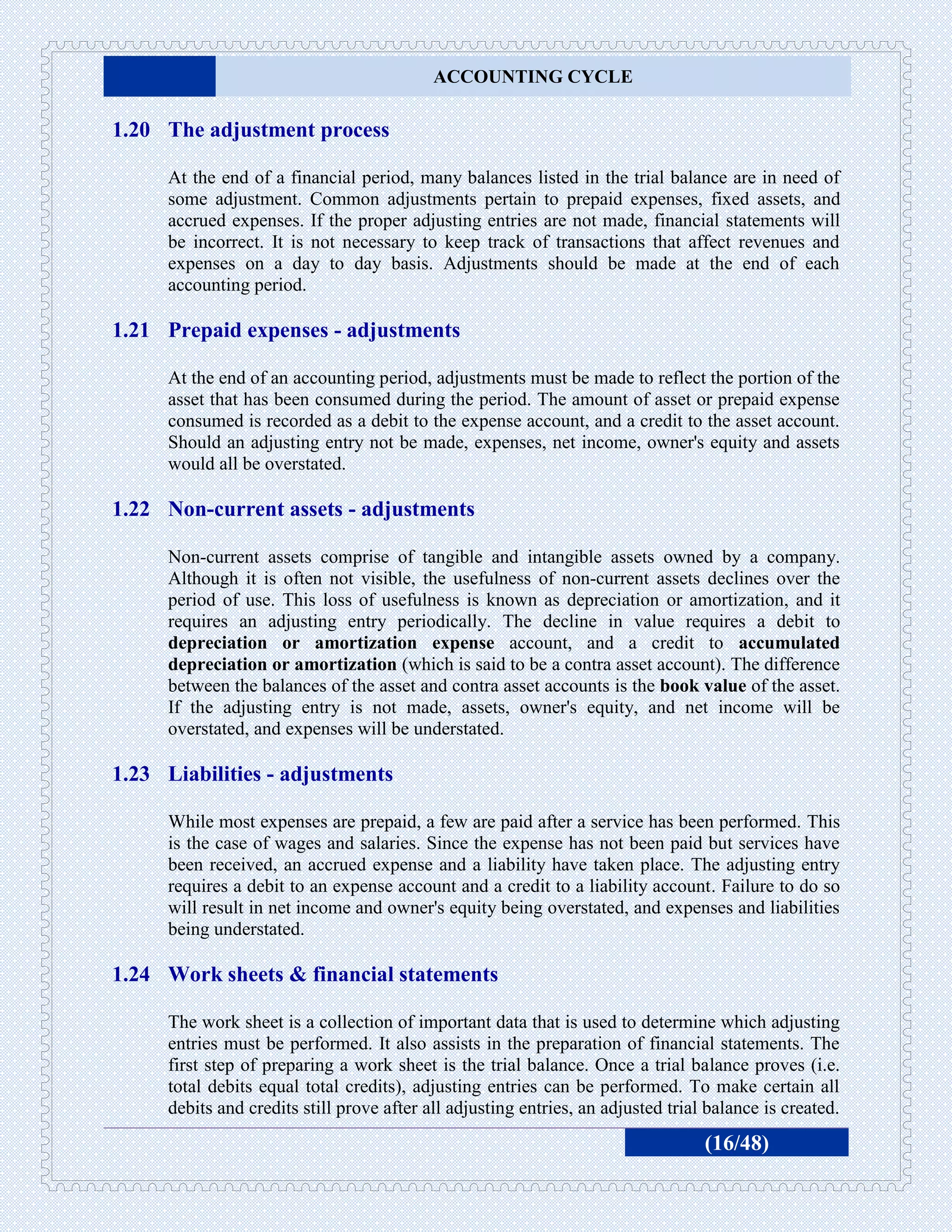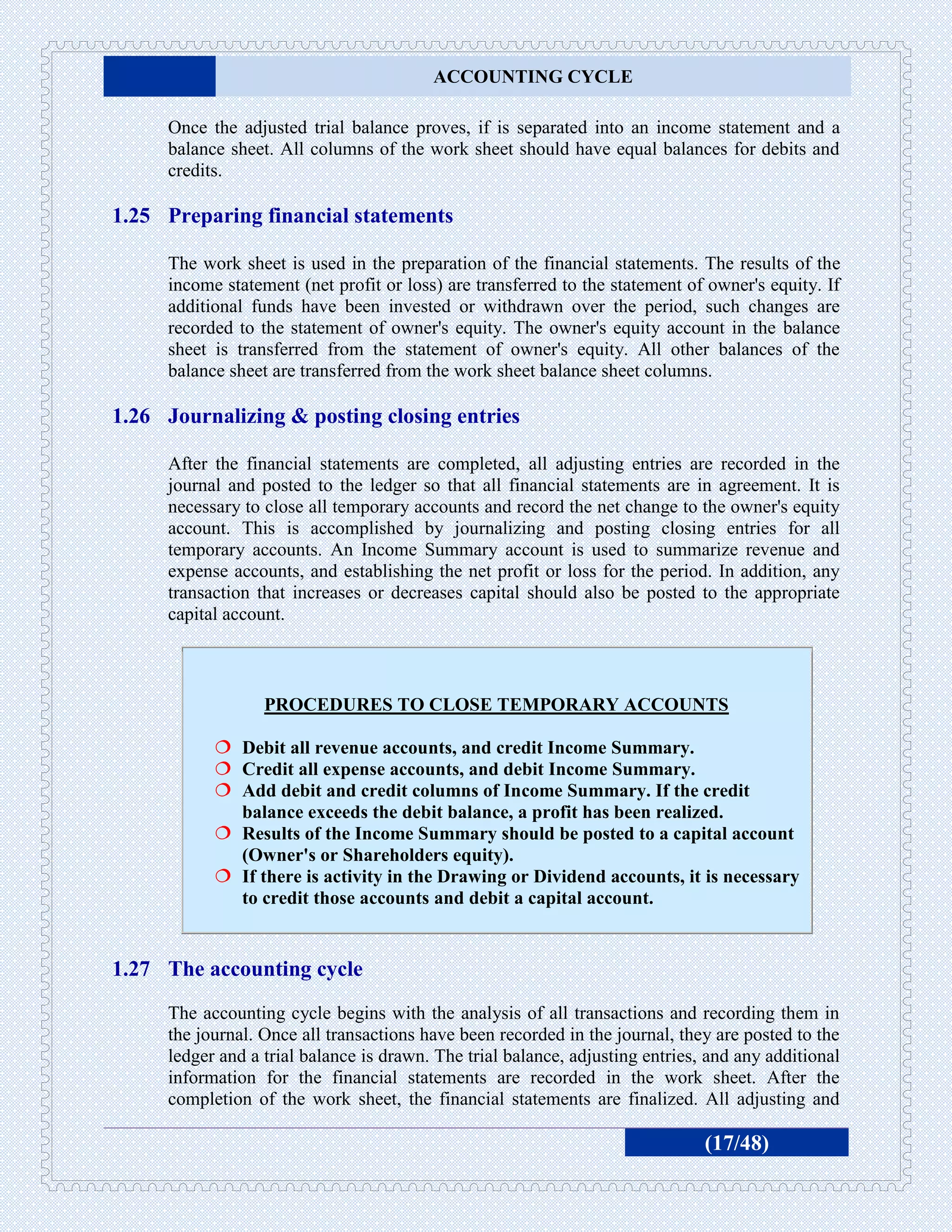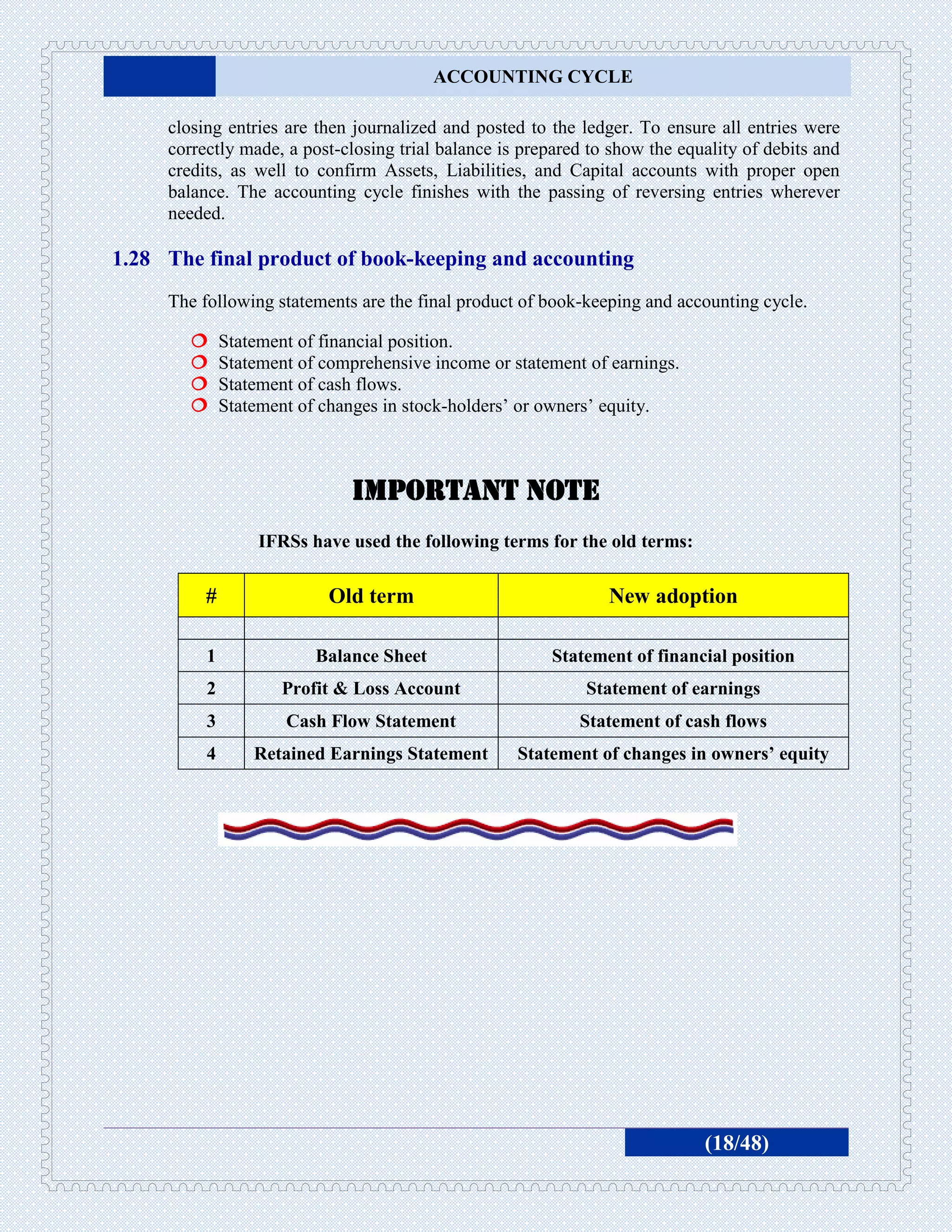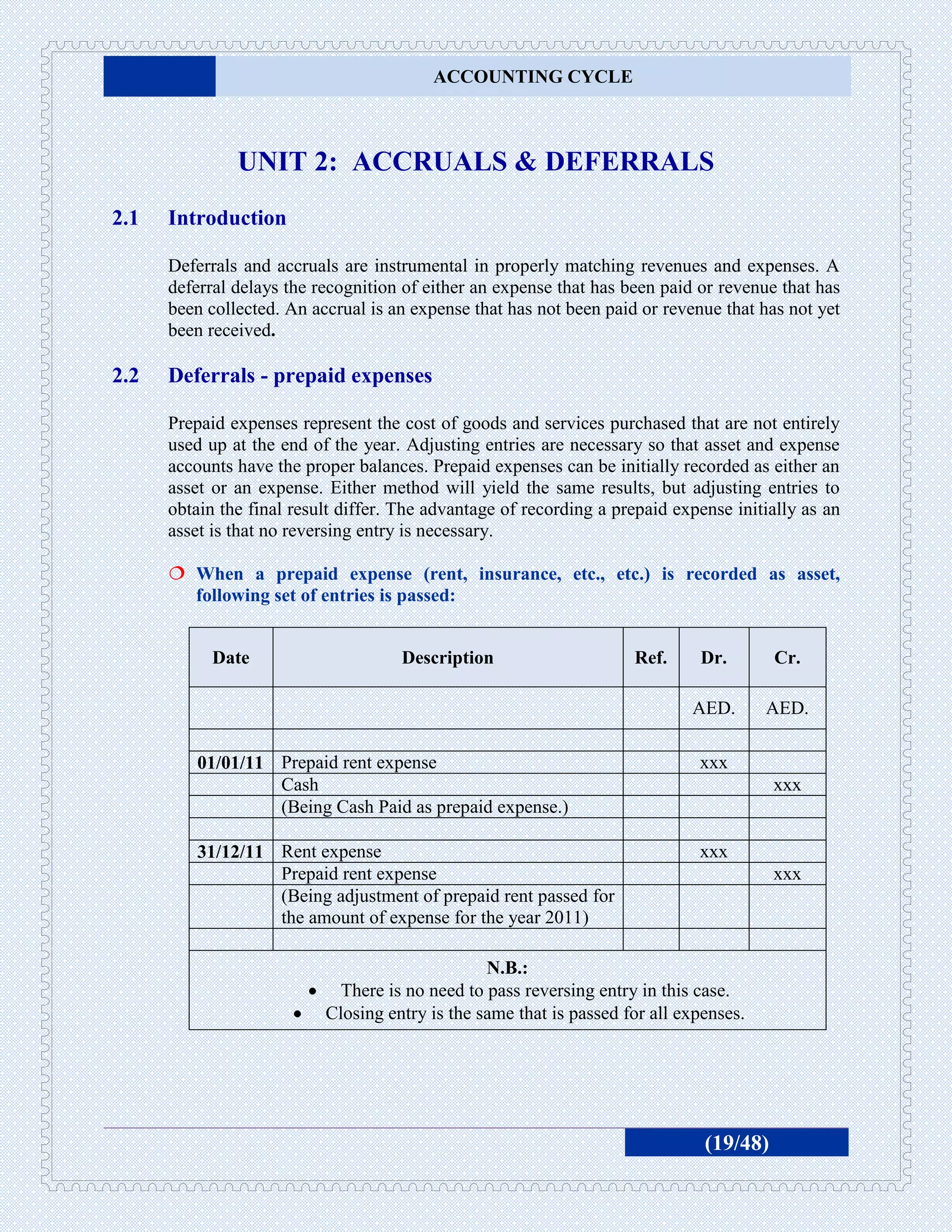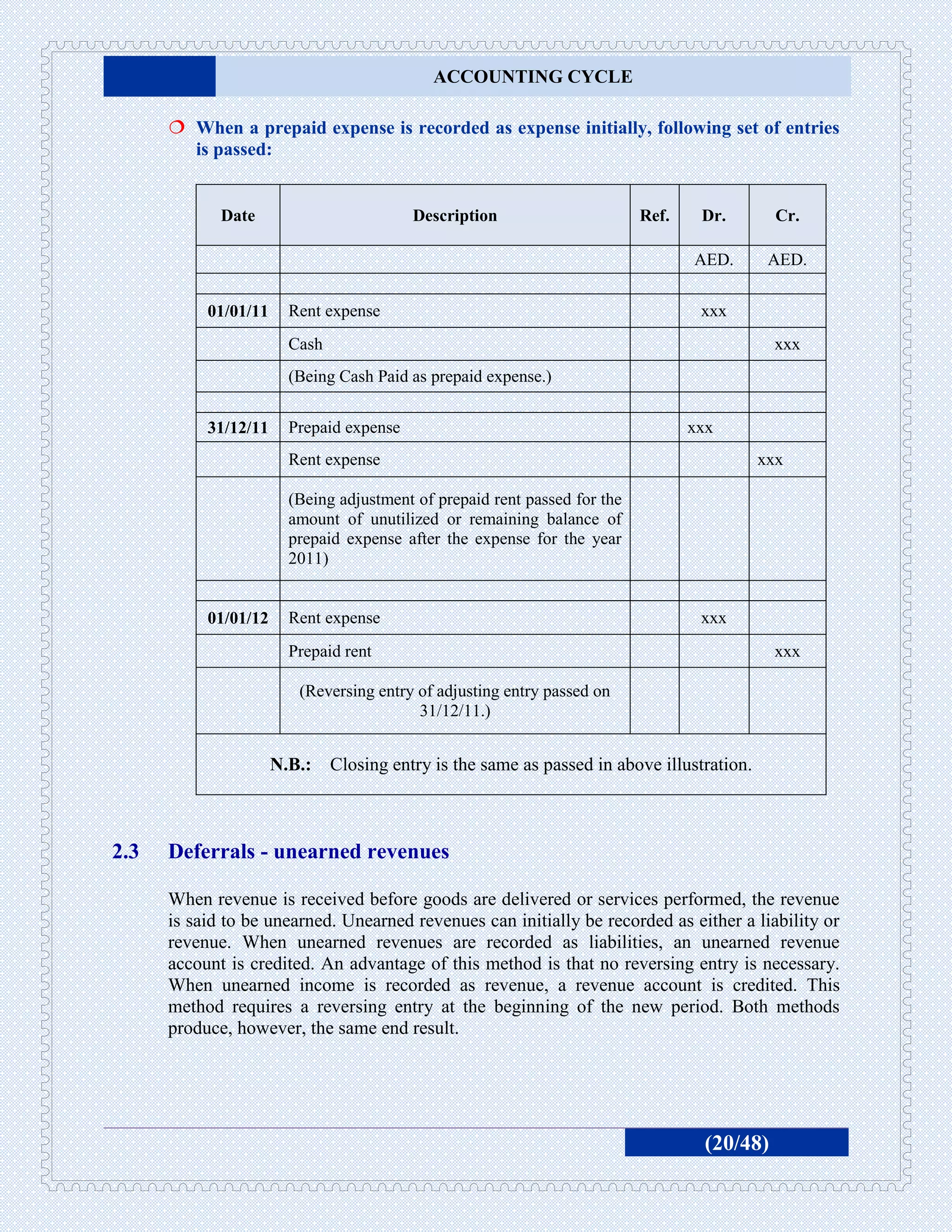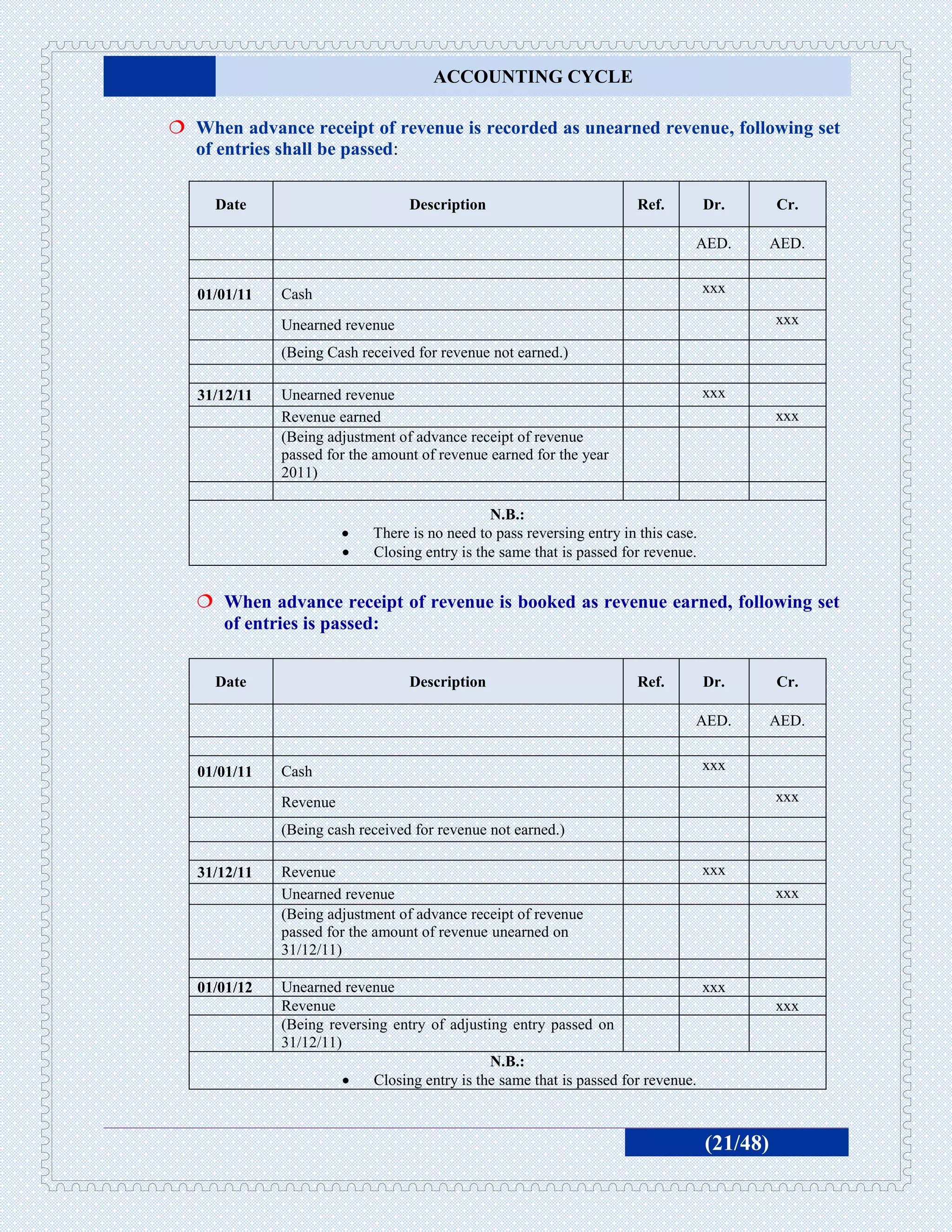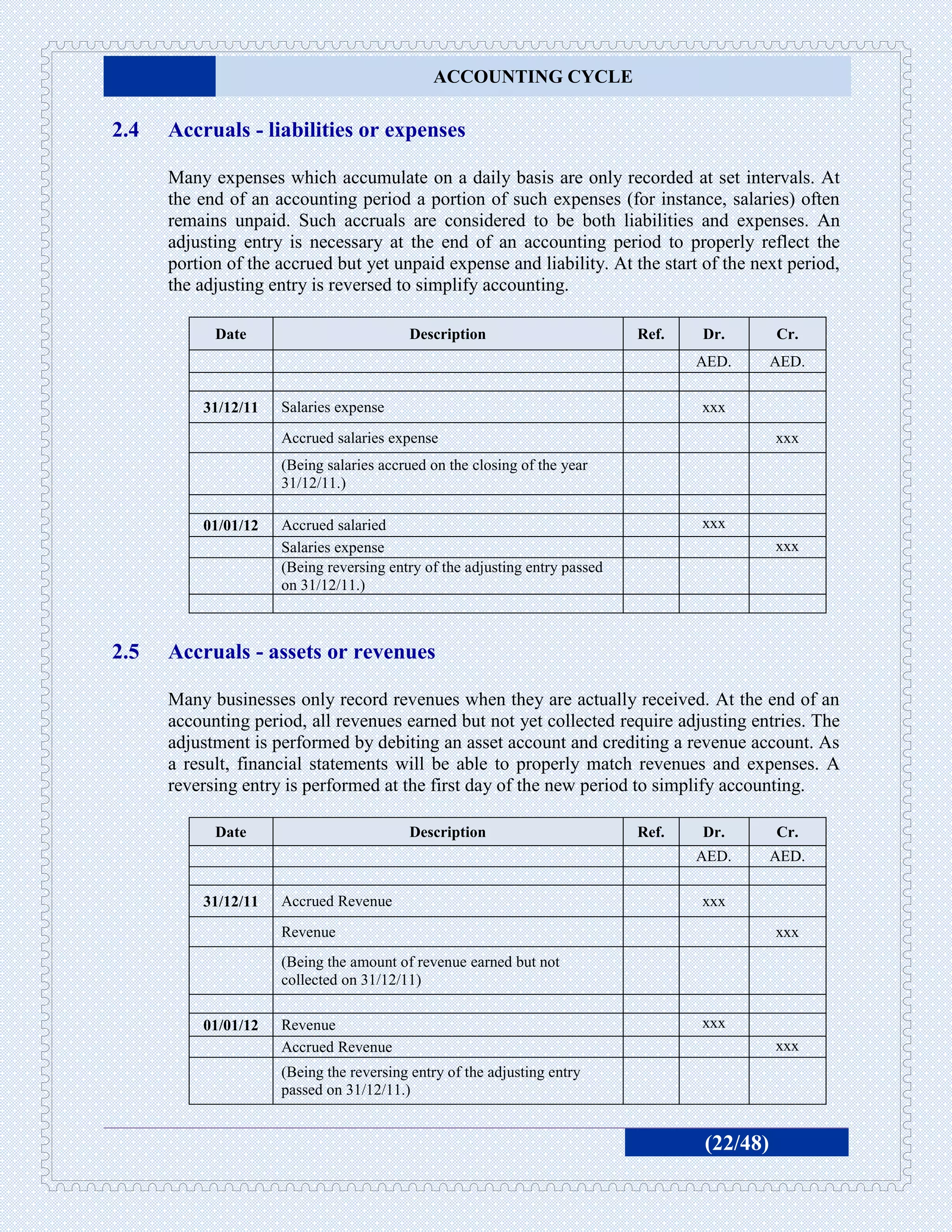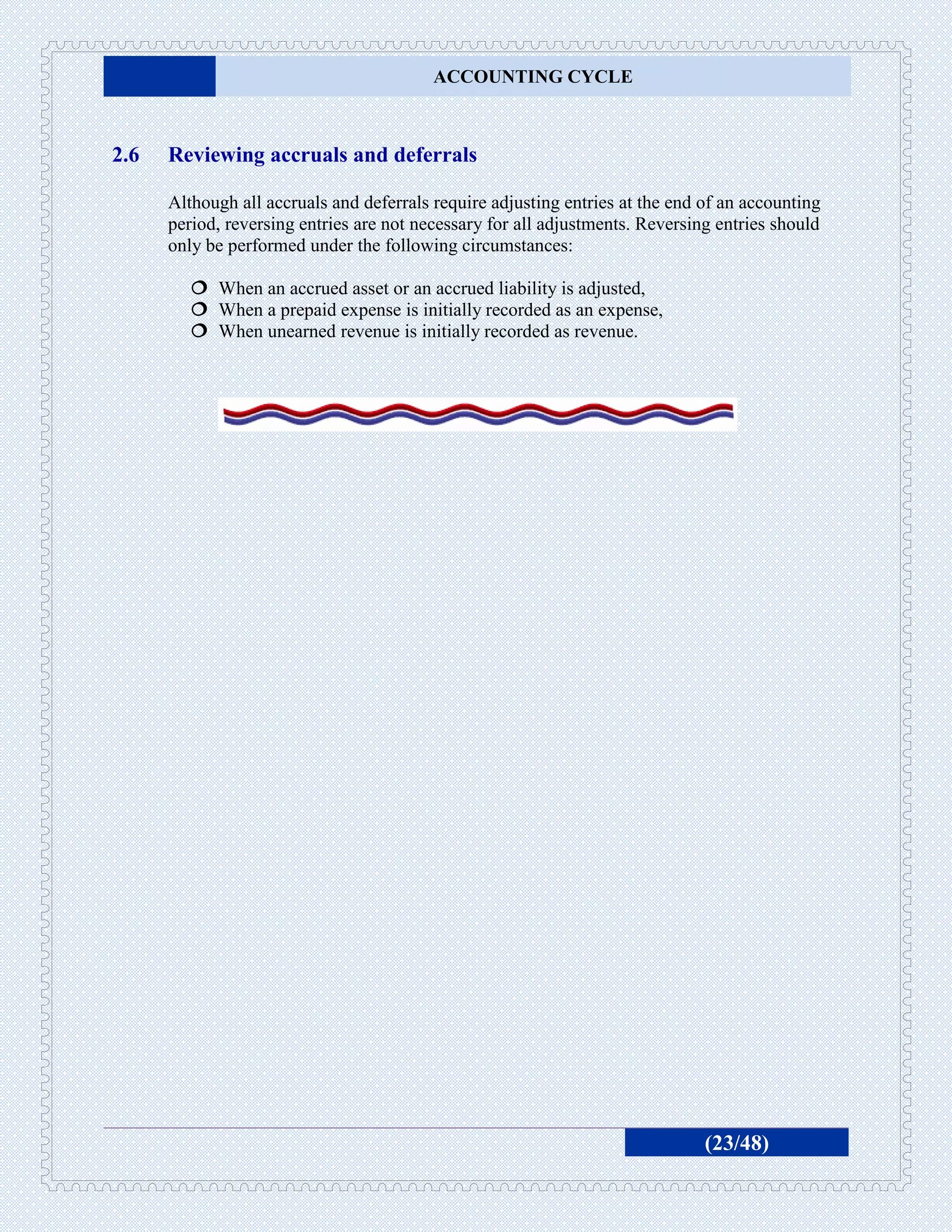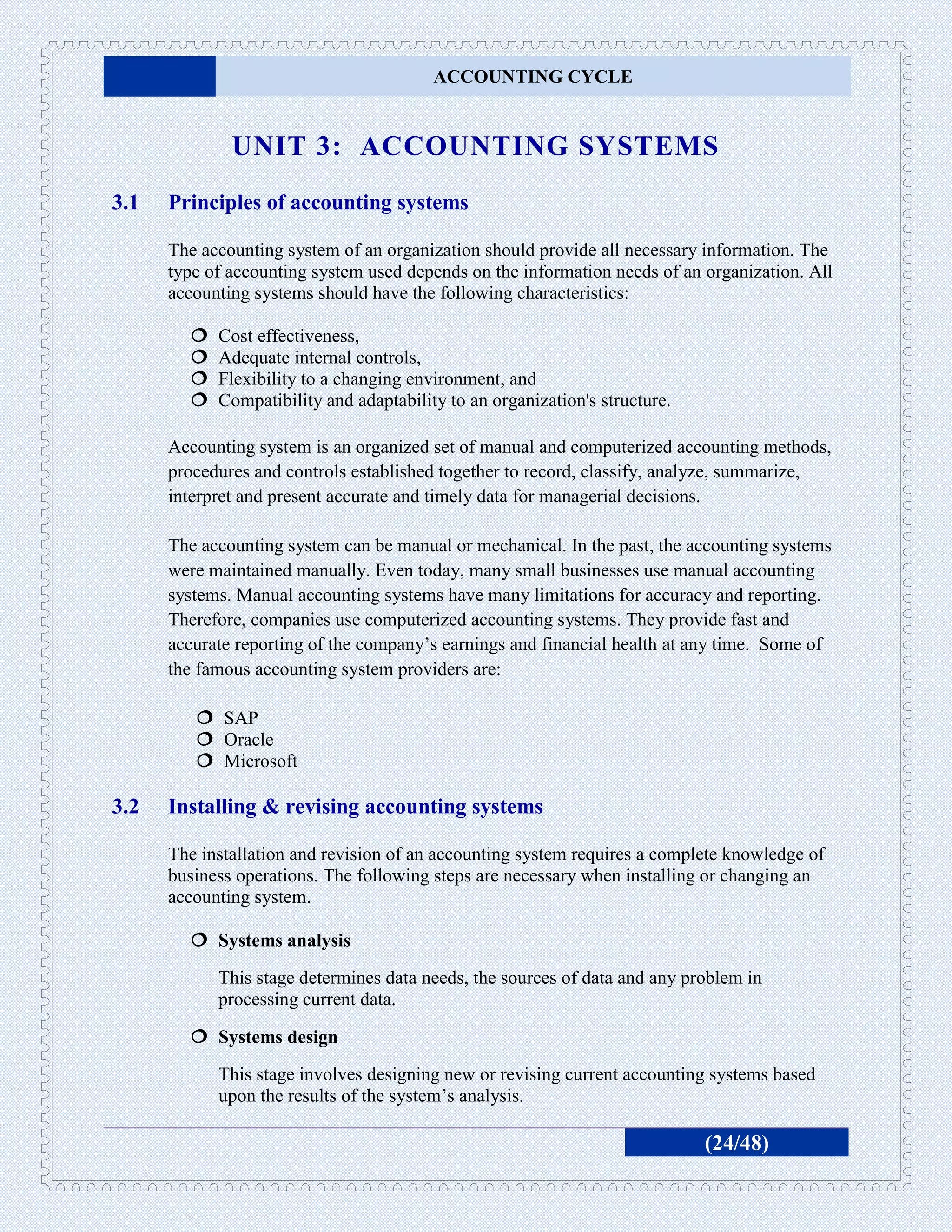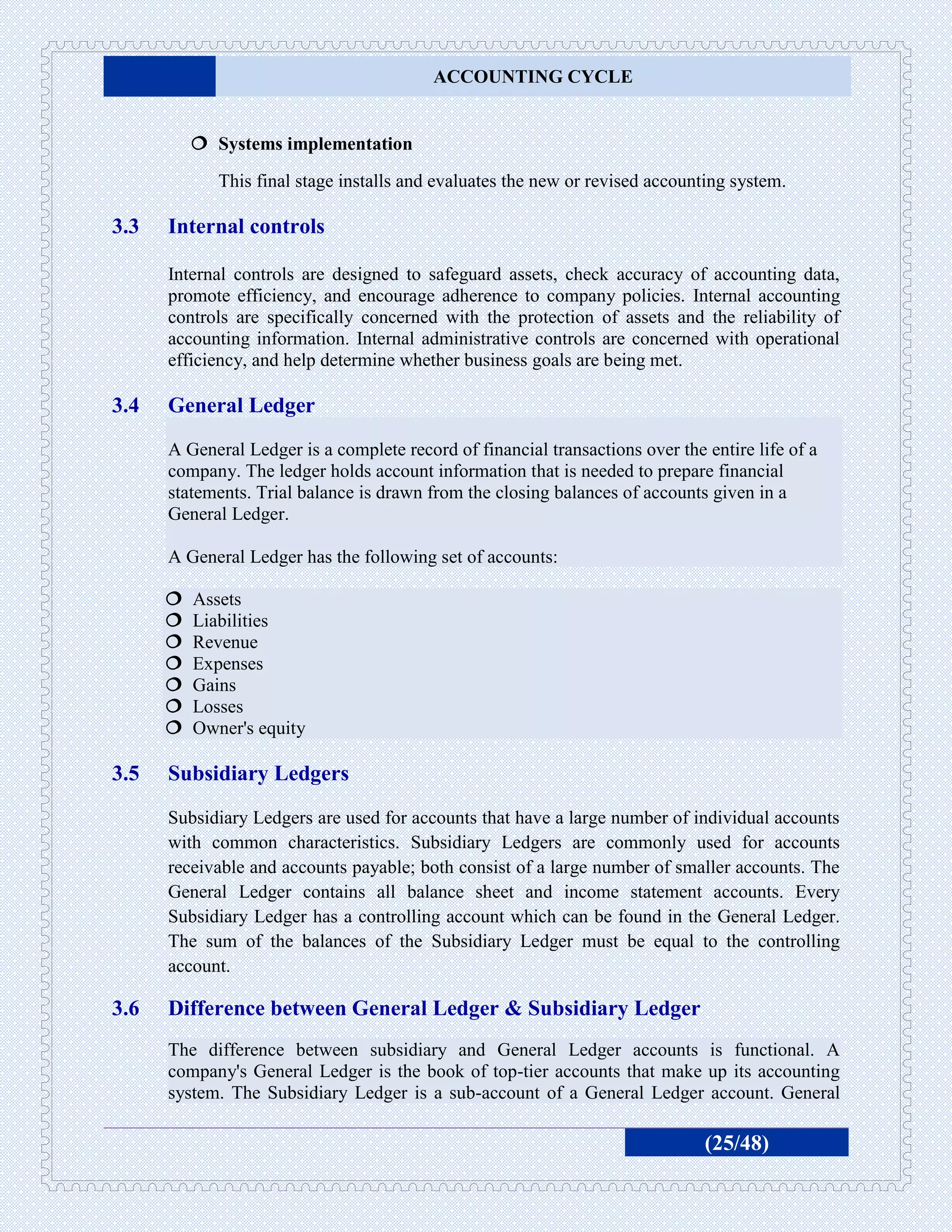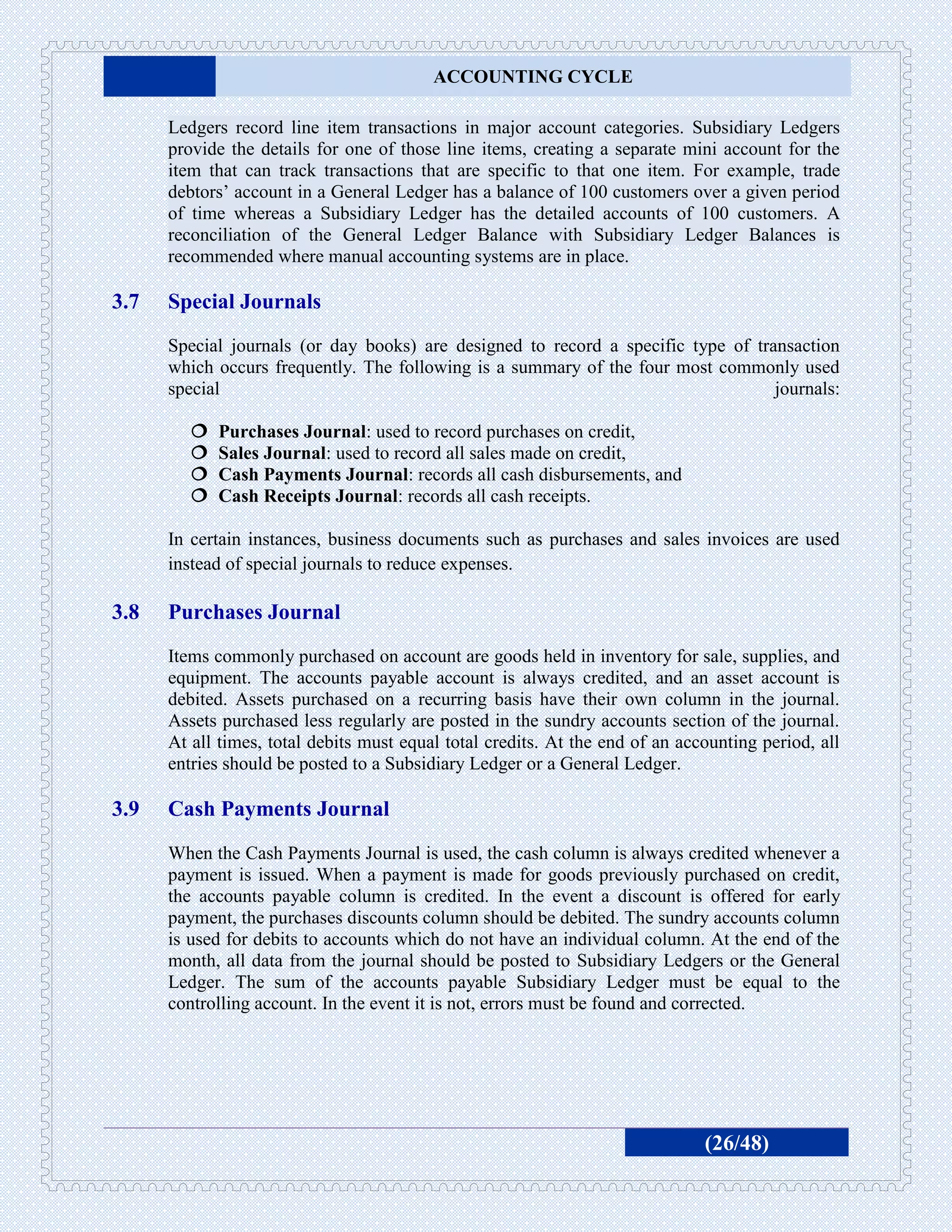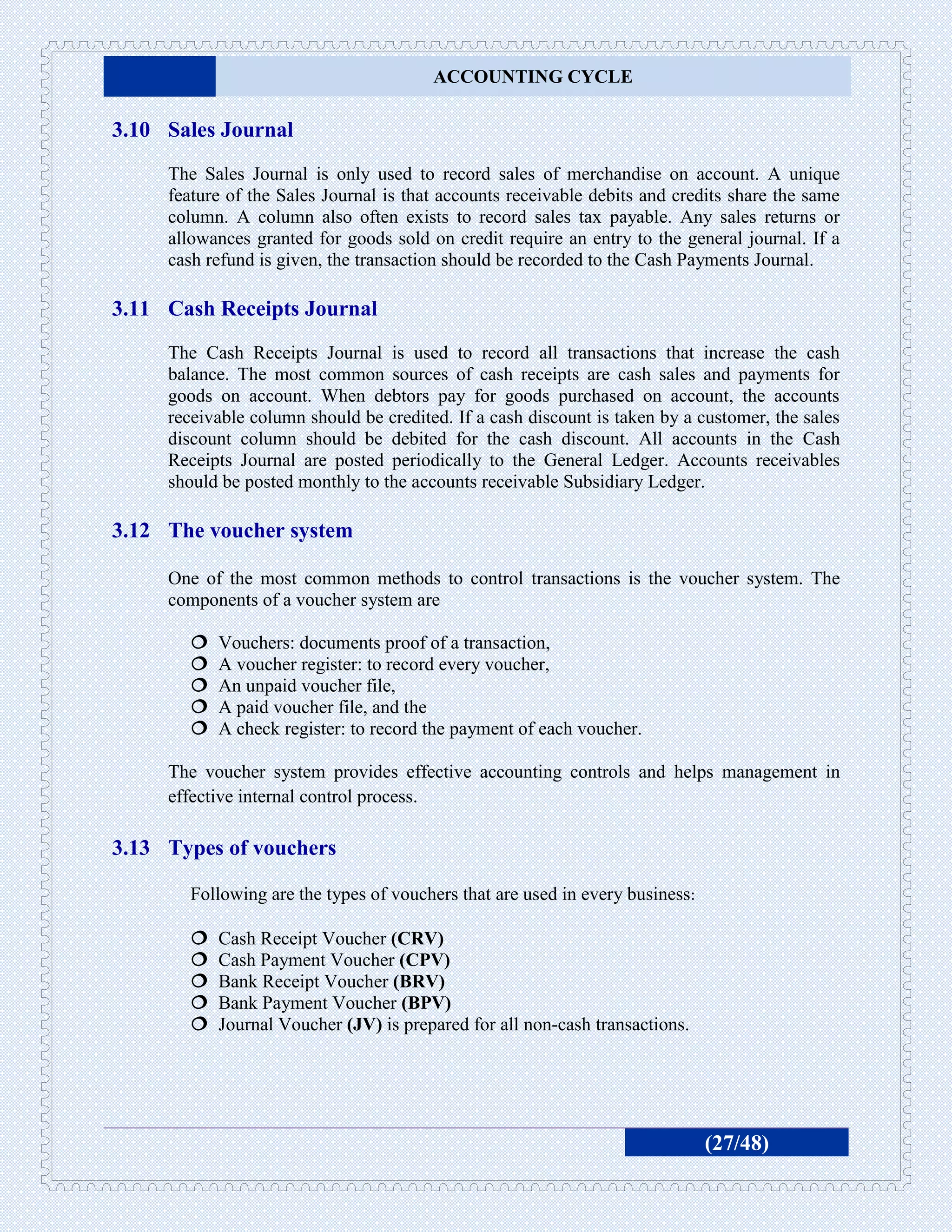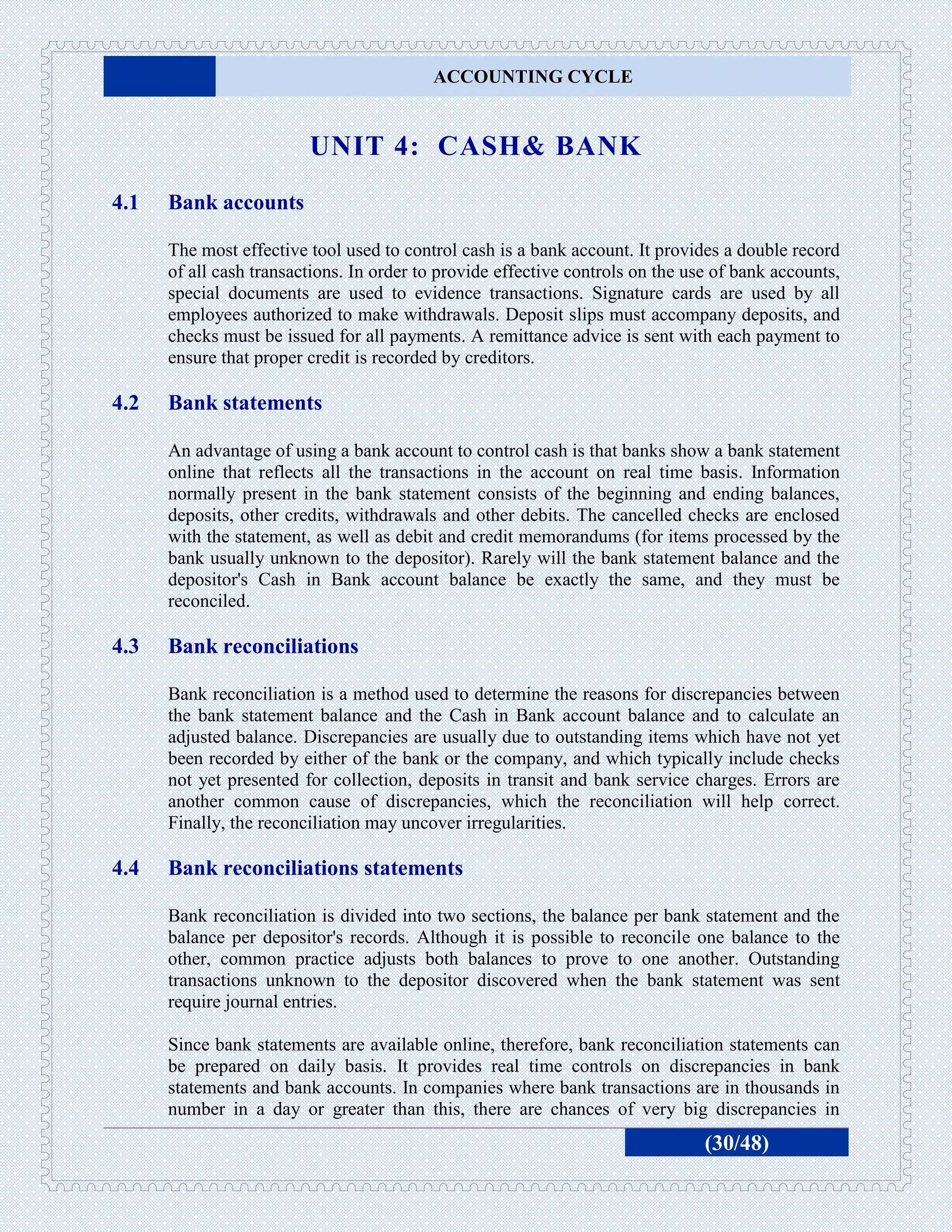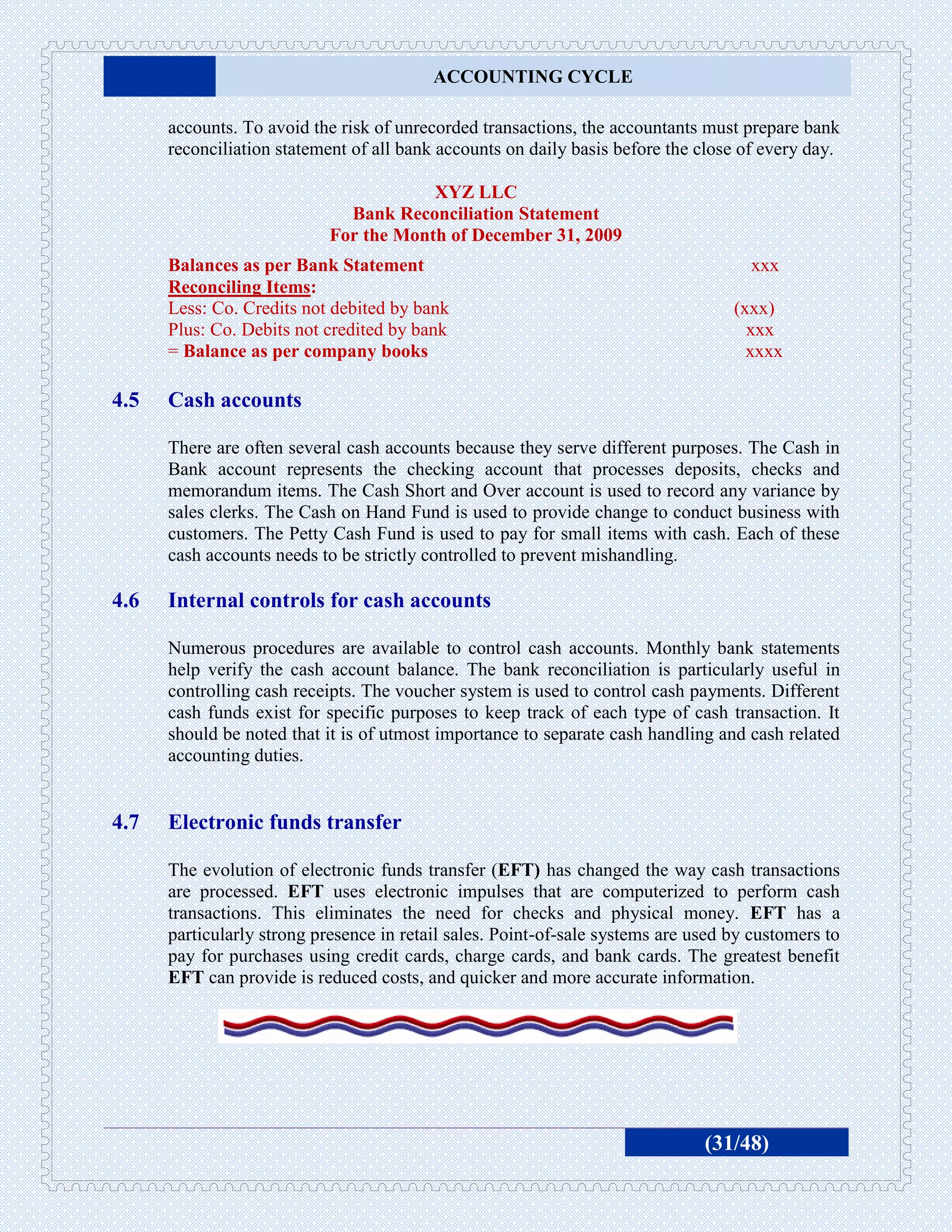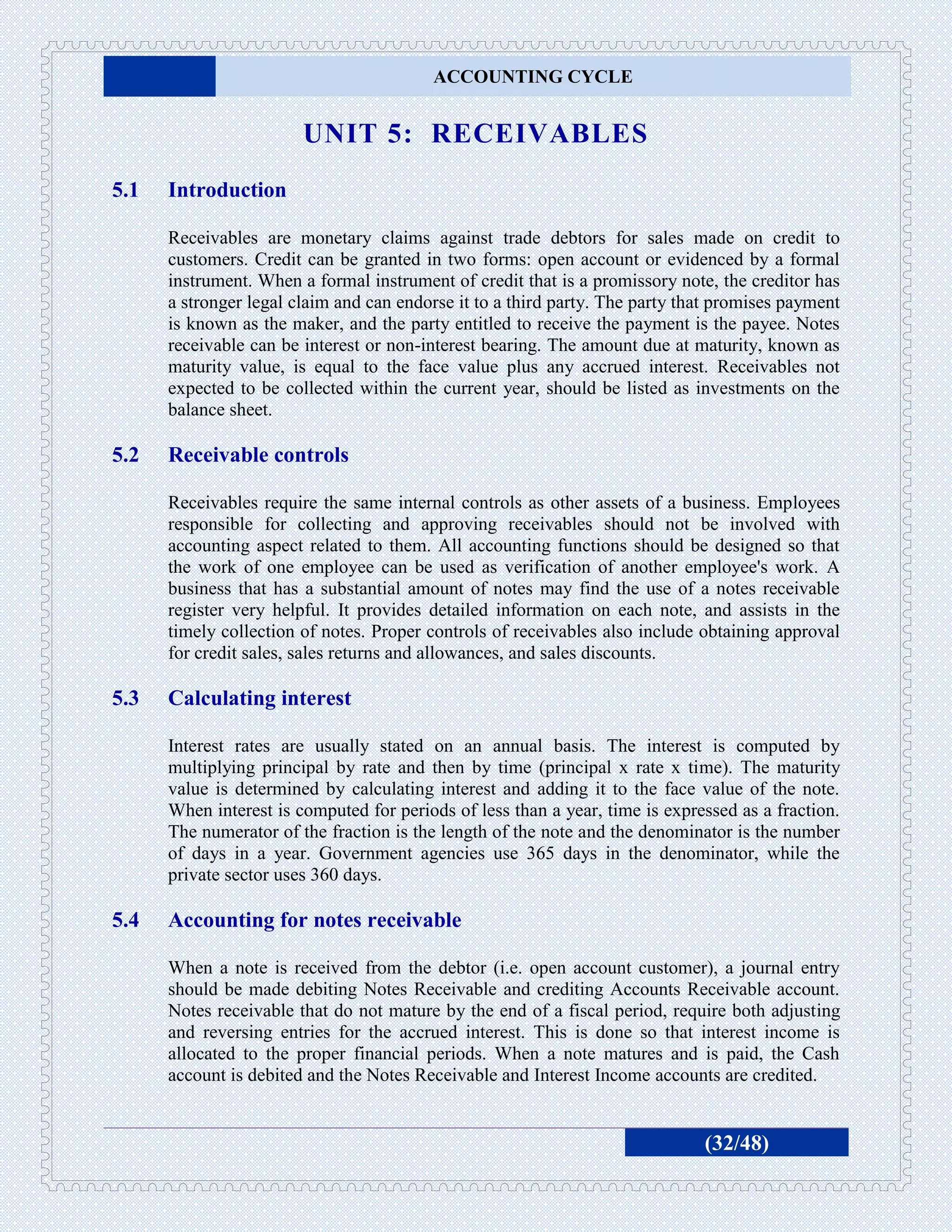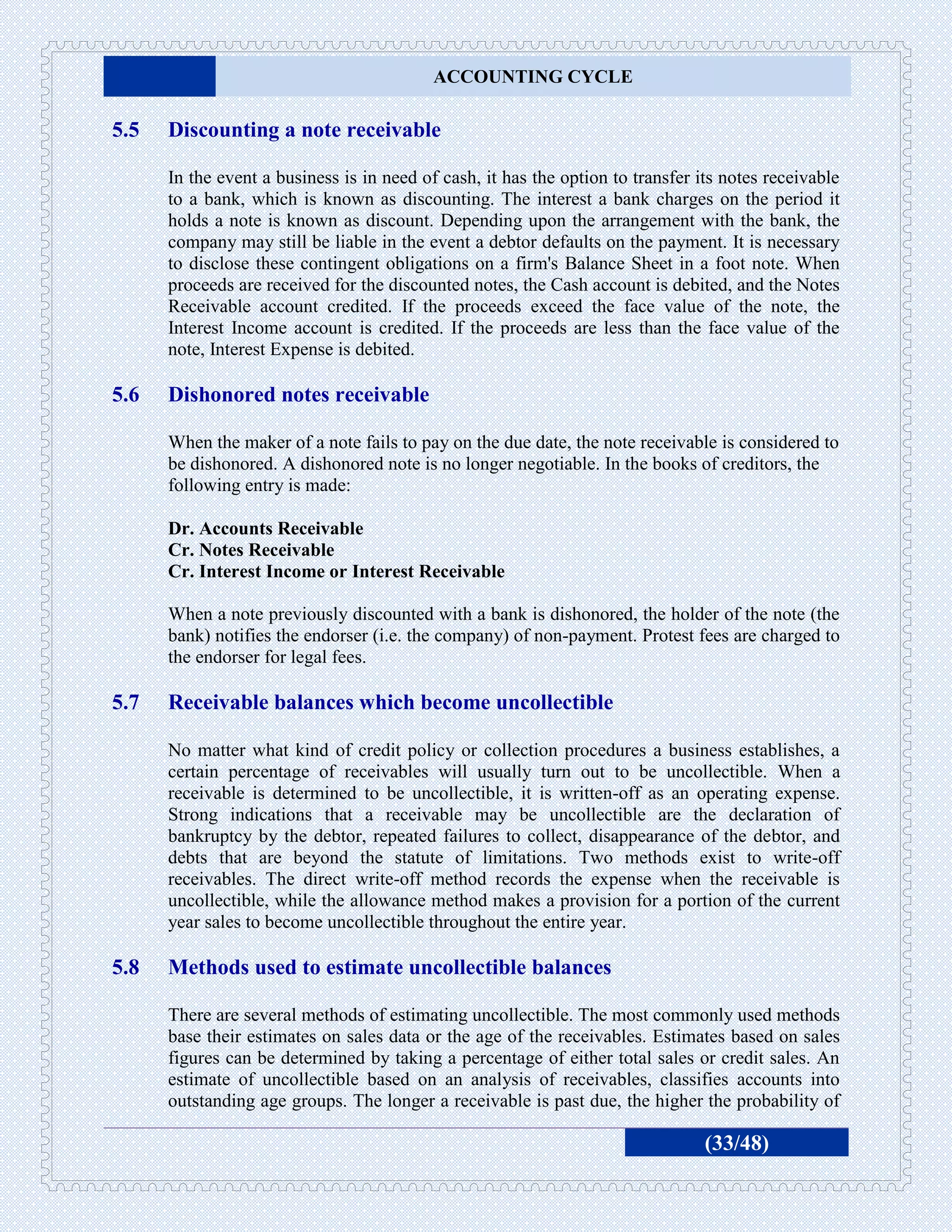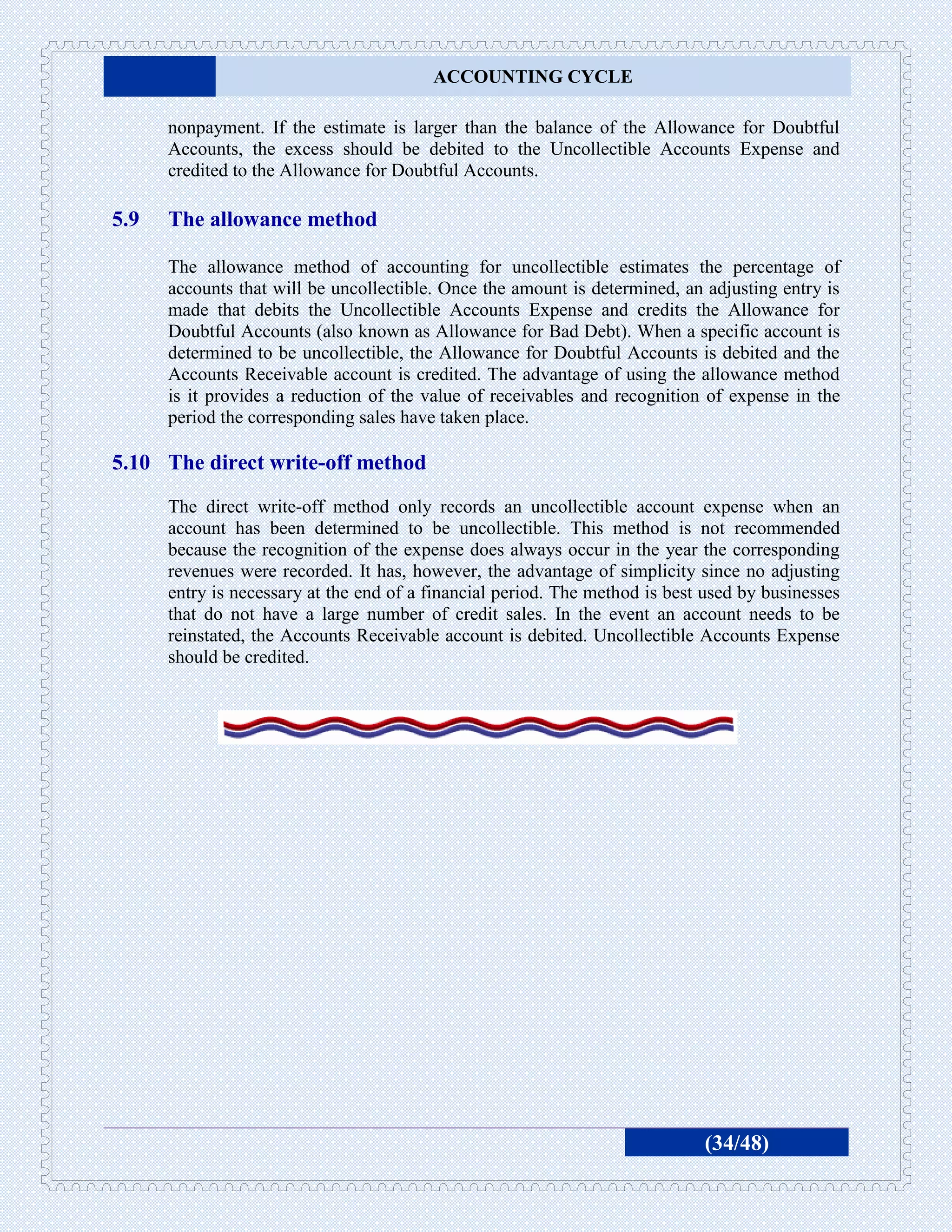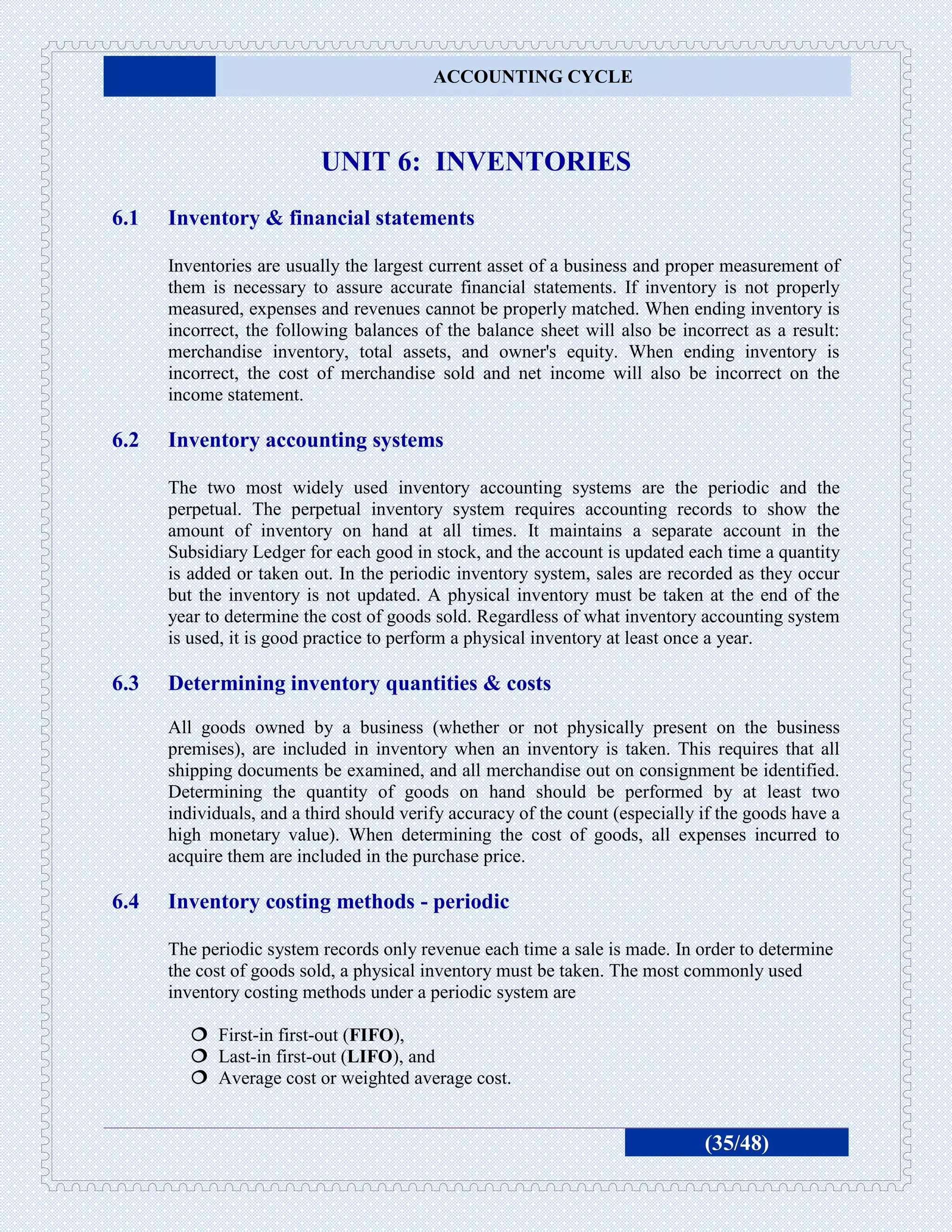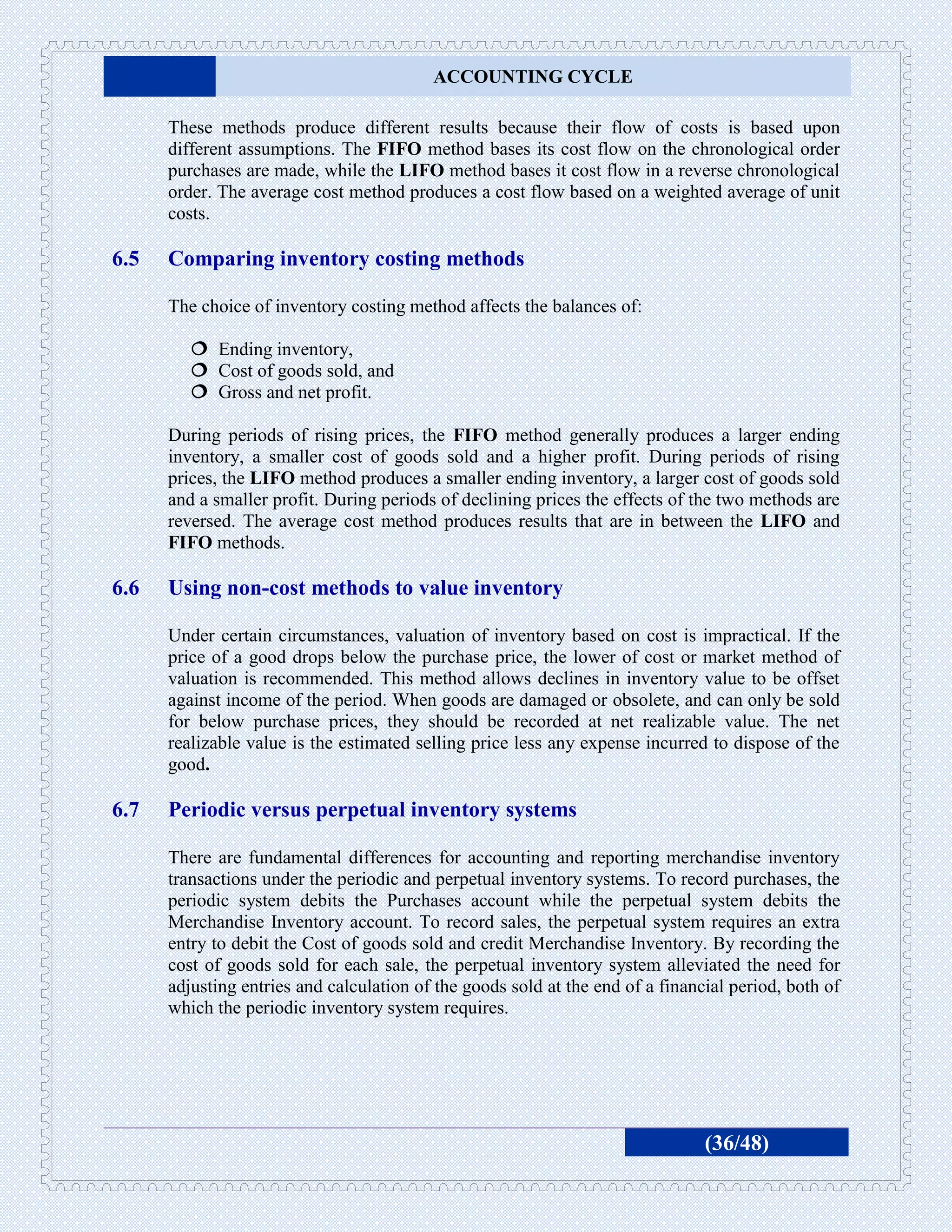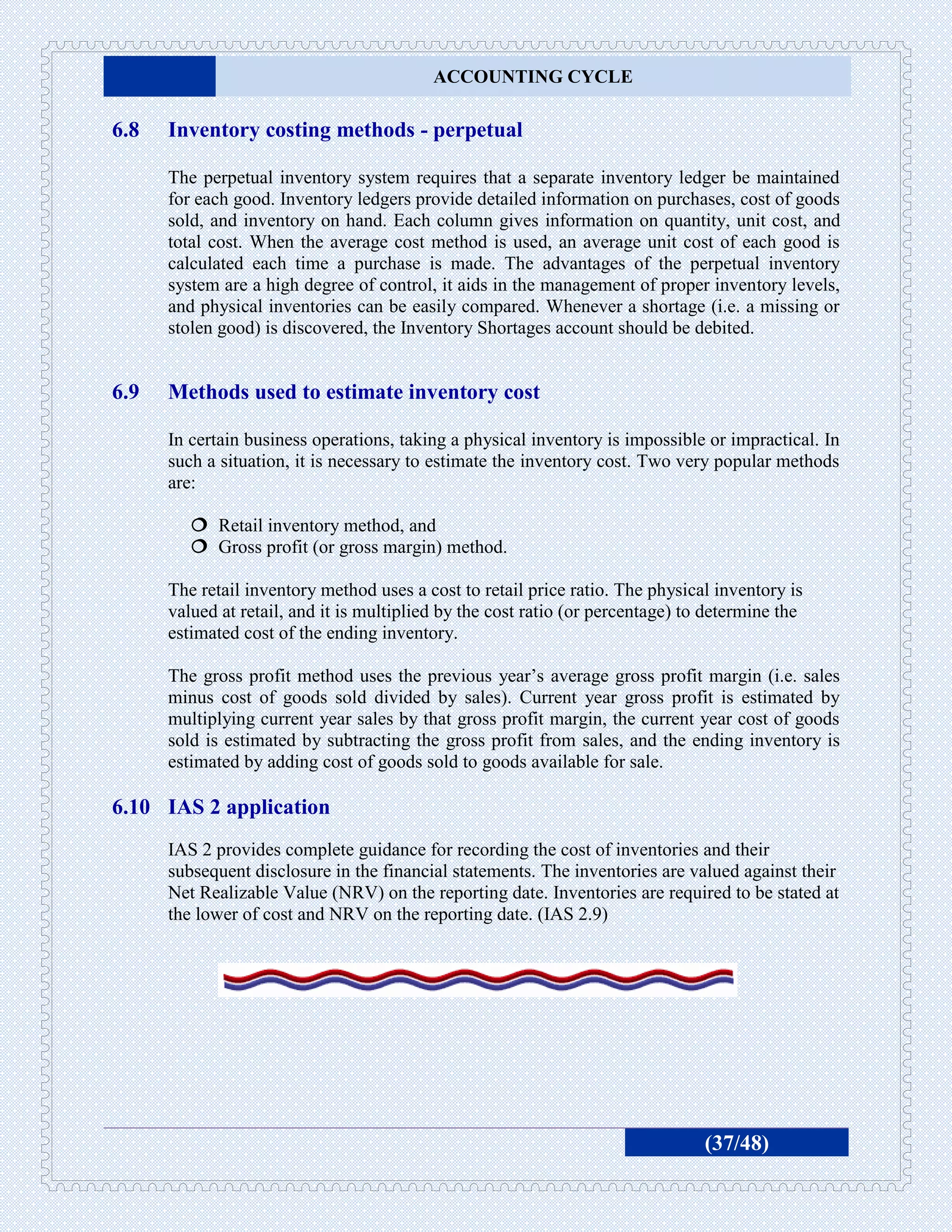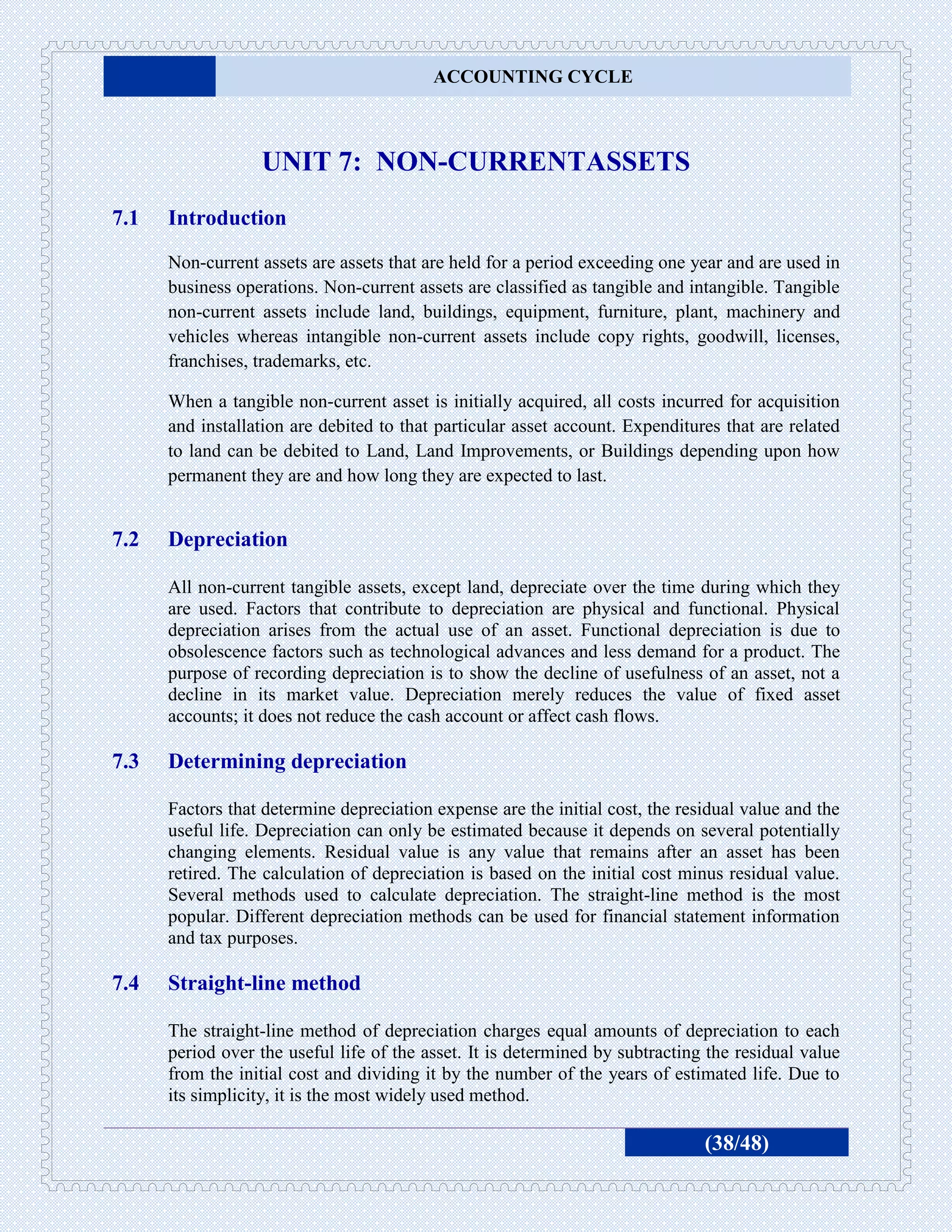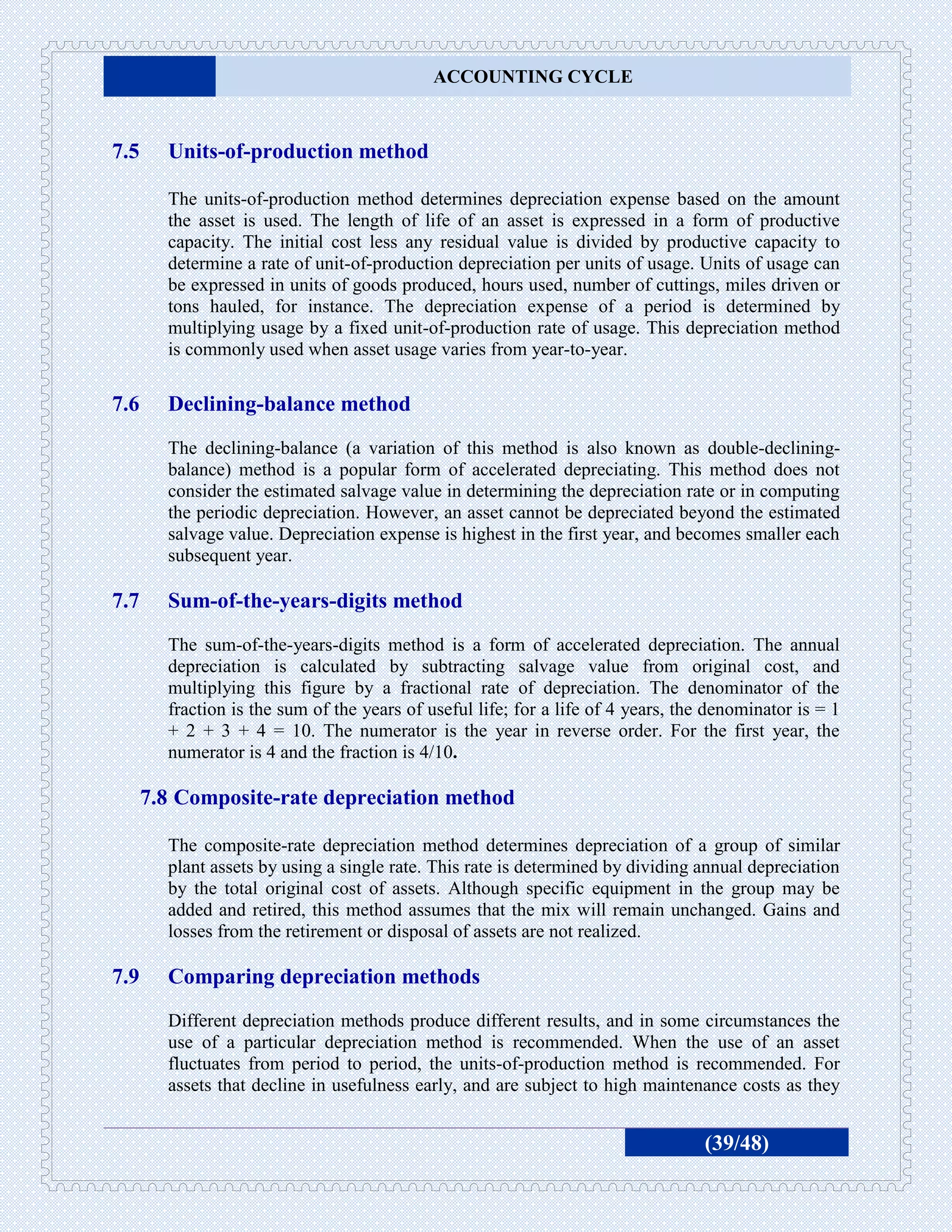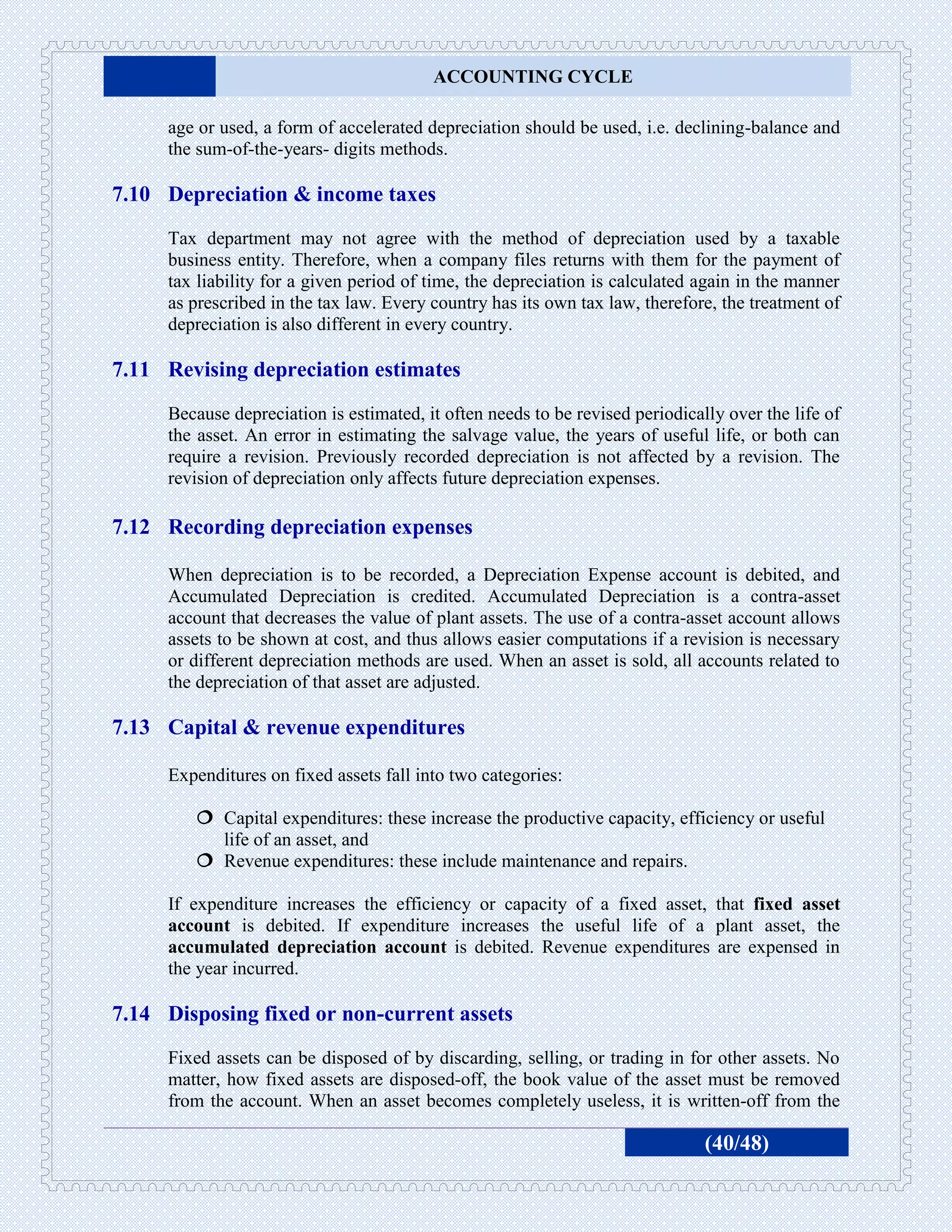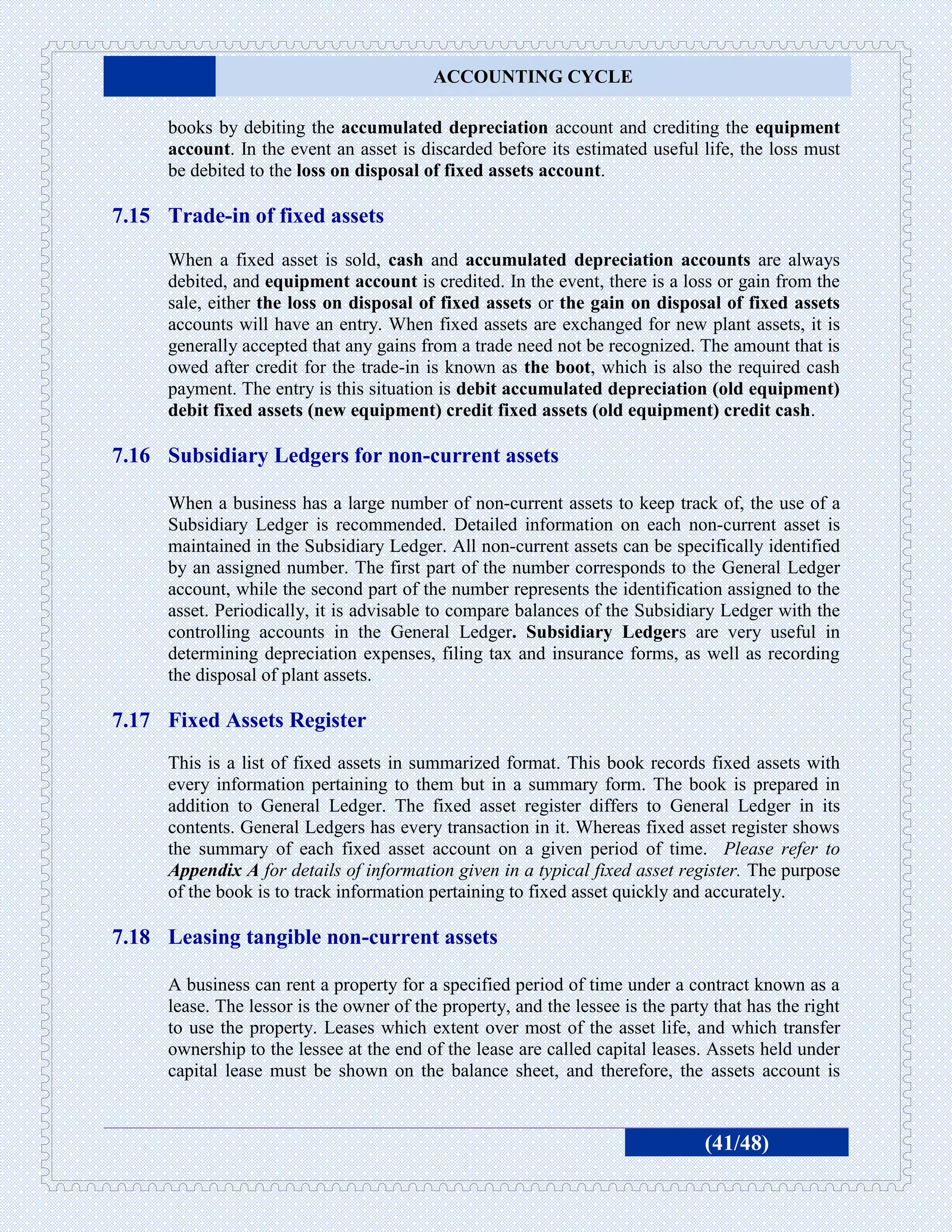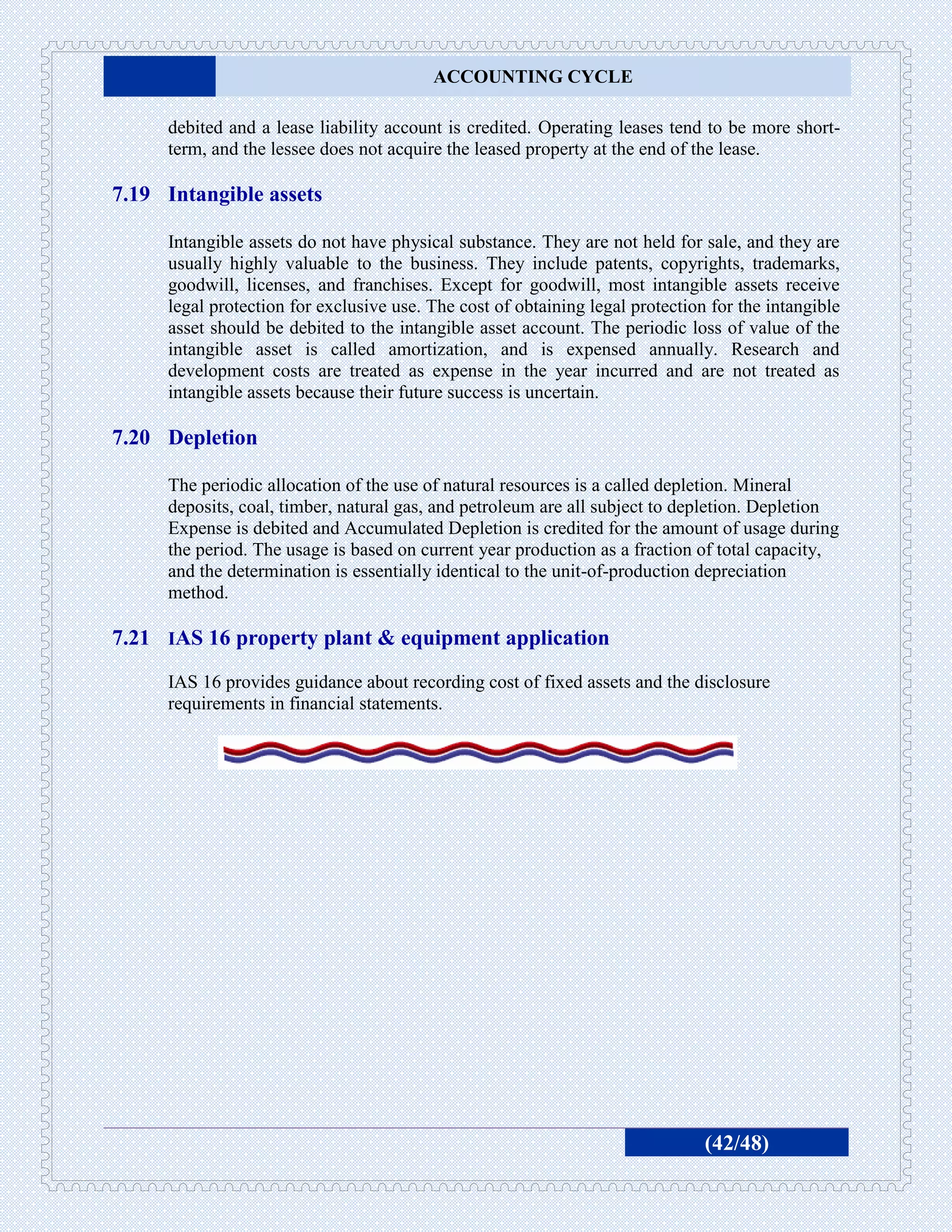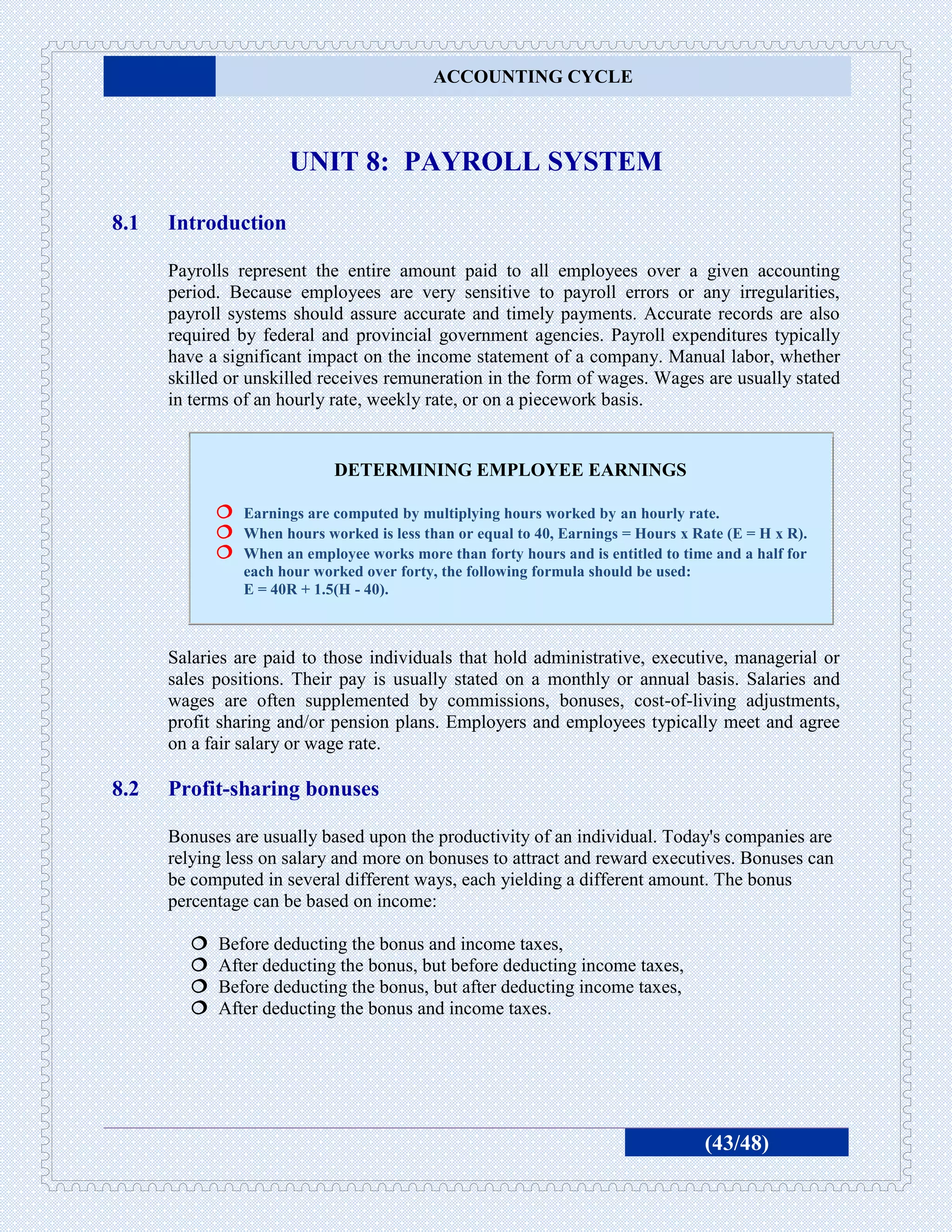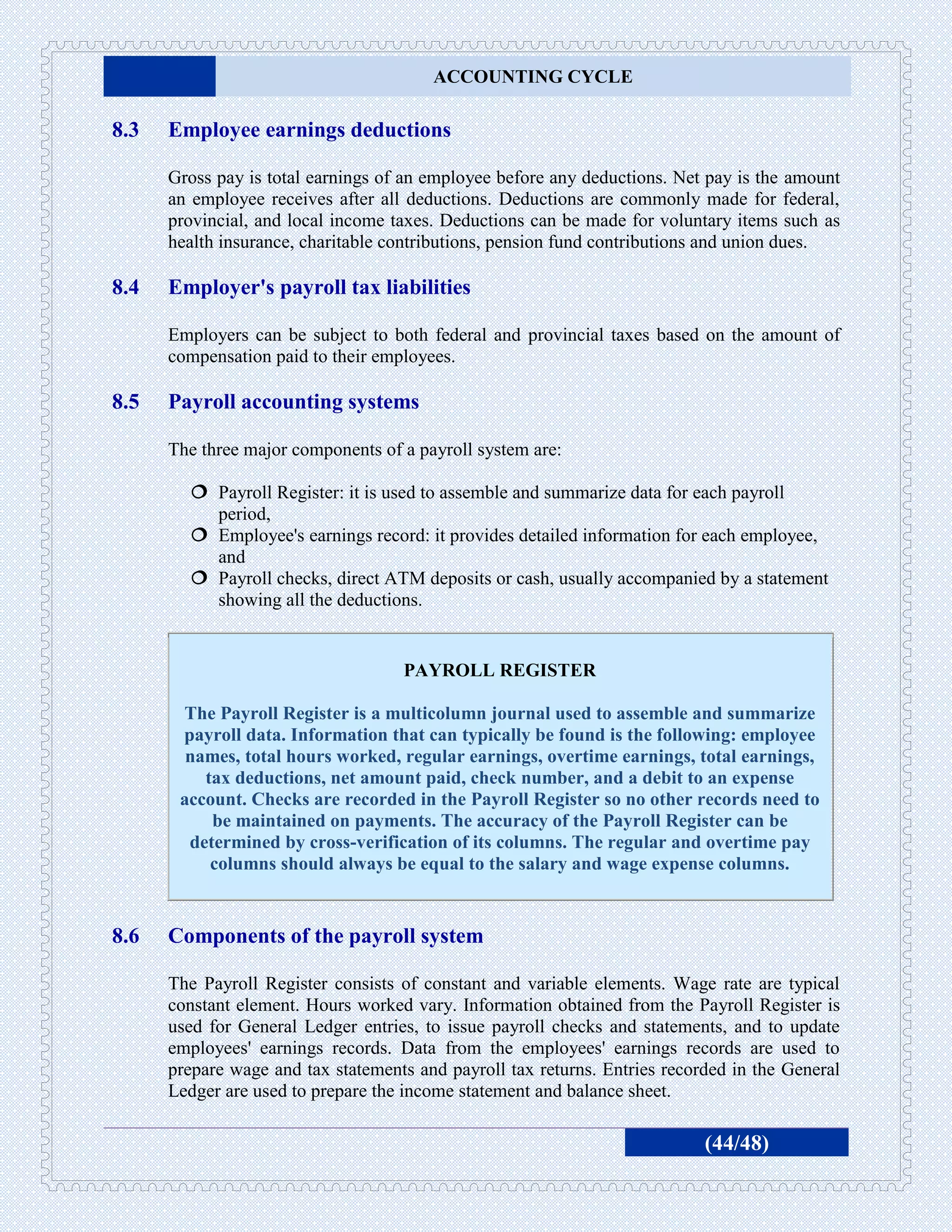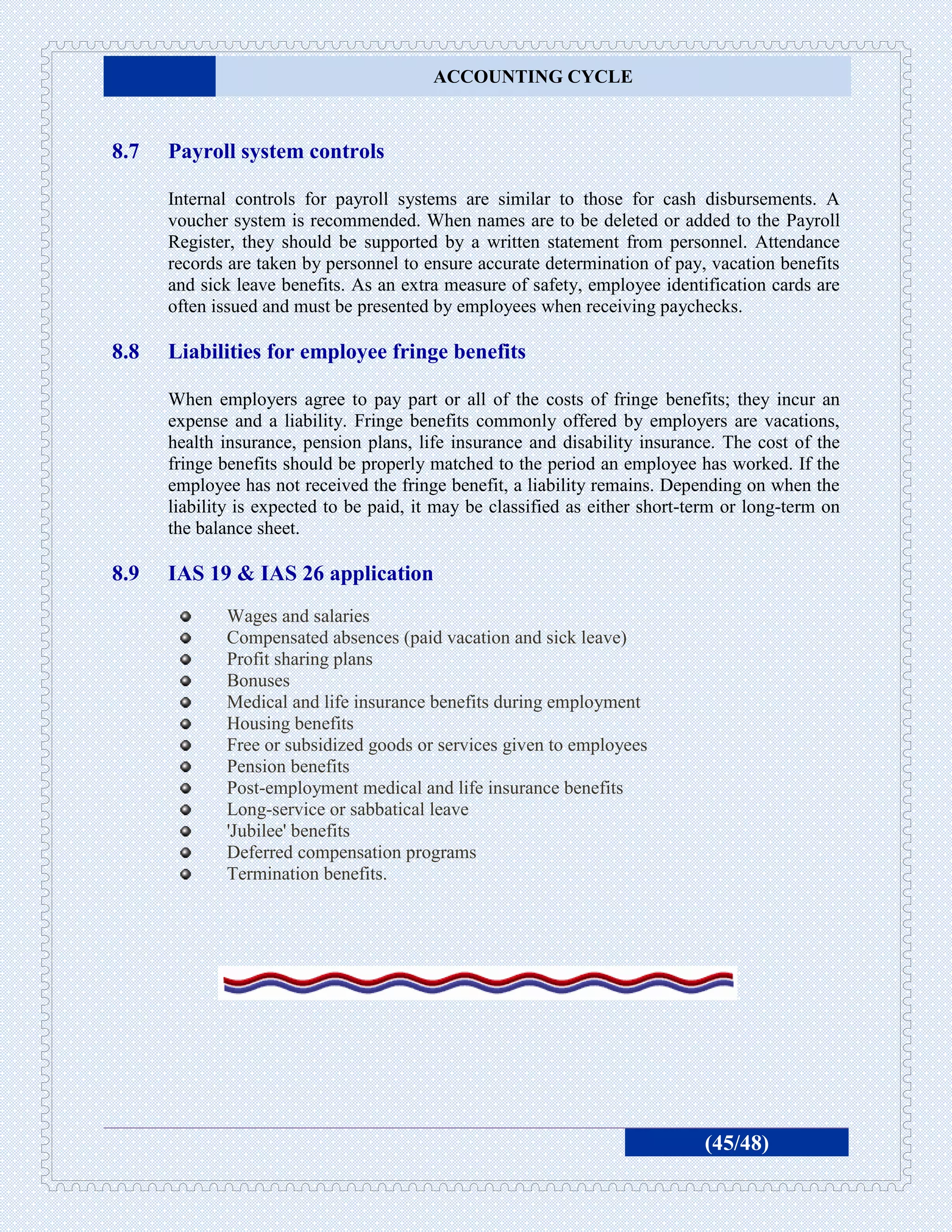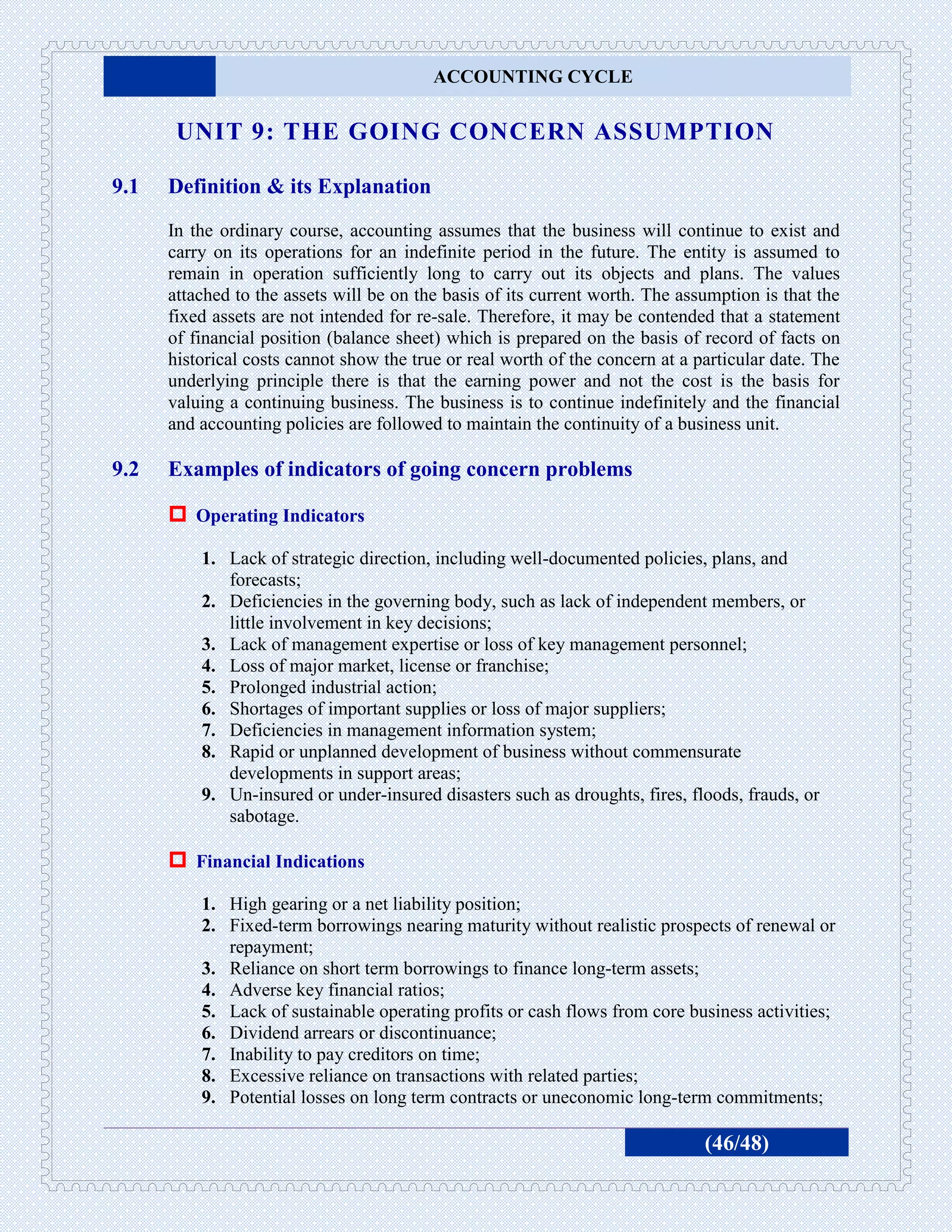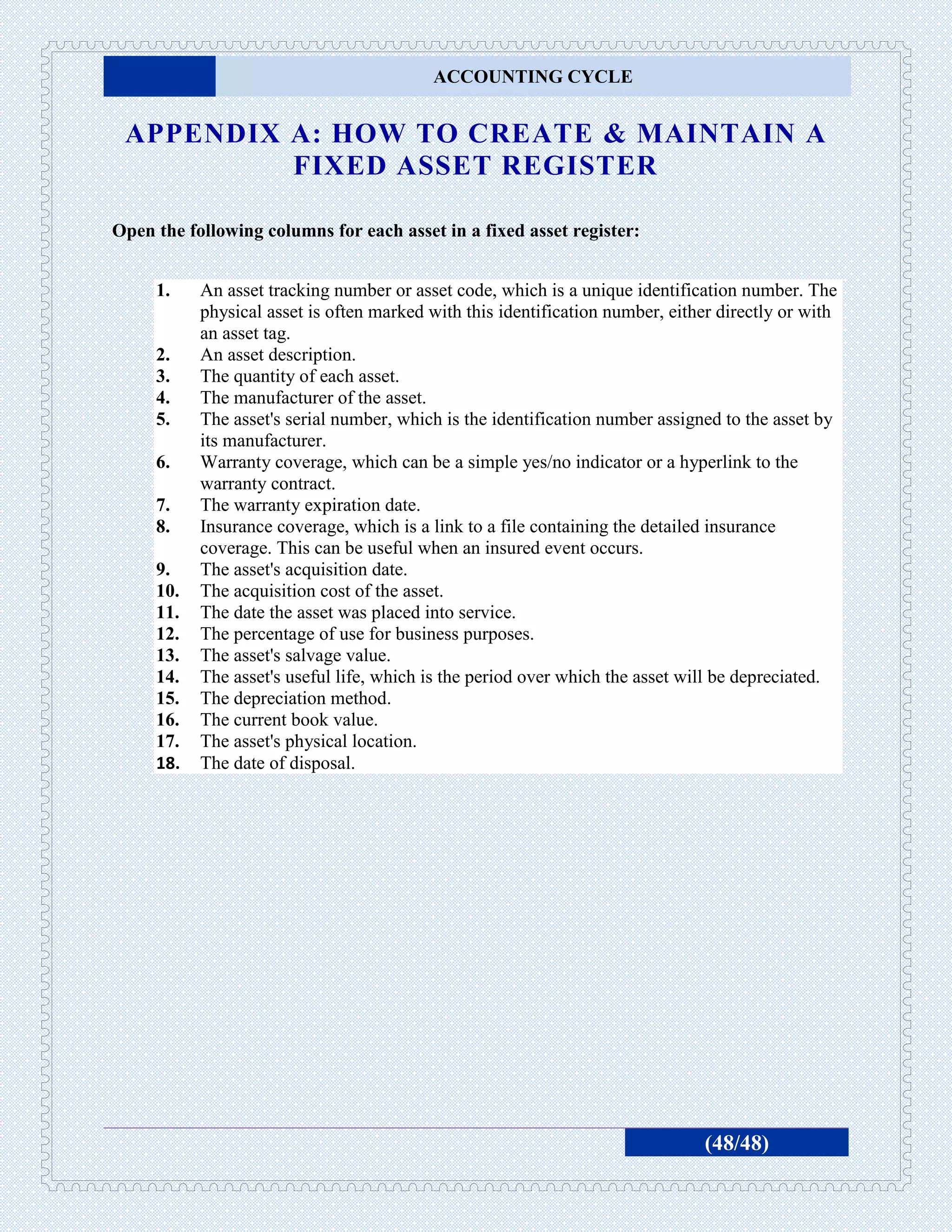The accounting cycle involves recording business transactions, preparing financial statements, and closing books at the end of each accounting period. It is based on key assumptions and principles including:
1) Transactions are recorded based on the accrual concept, which matches revenues to expenses in the period they are incurred regardless of when cash is received or paid.
2) Financial statements are prepared at the end of each period using the adjusted trial balance to provide an accurate picture of the company's financial position and performance.
3) The accounting equation (Assets = Liabilities + Equity) must always balance through double-entry bookkeeping, where every transaction has equal and offsetting debits and credits.
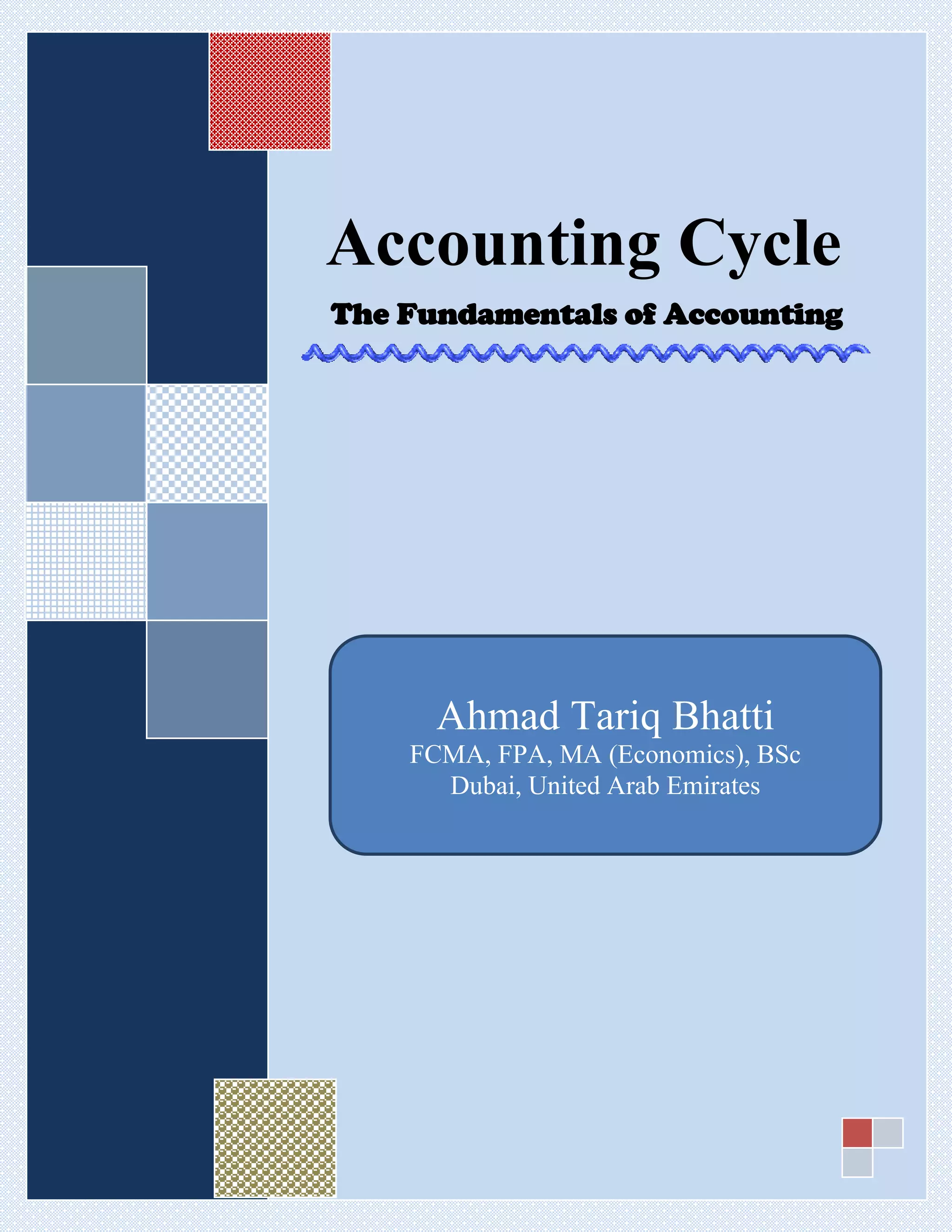
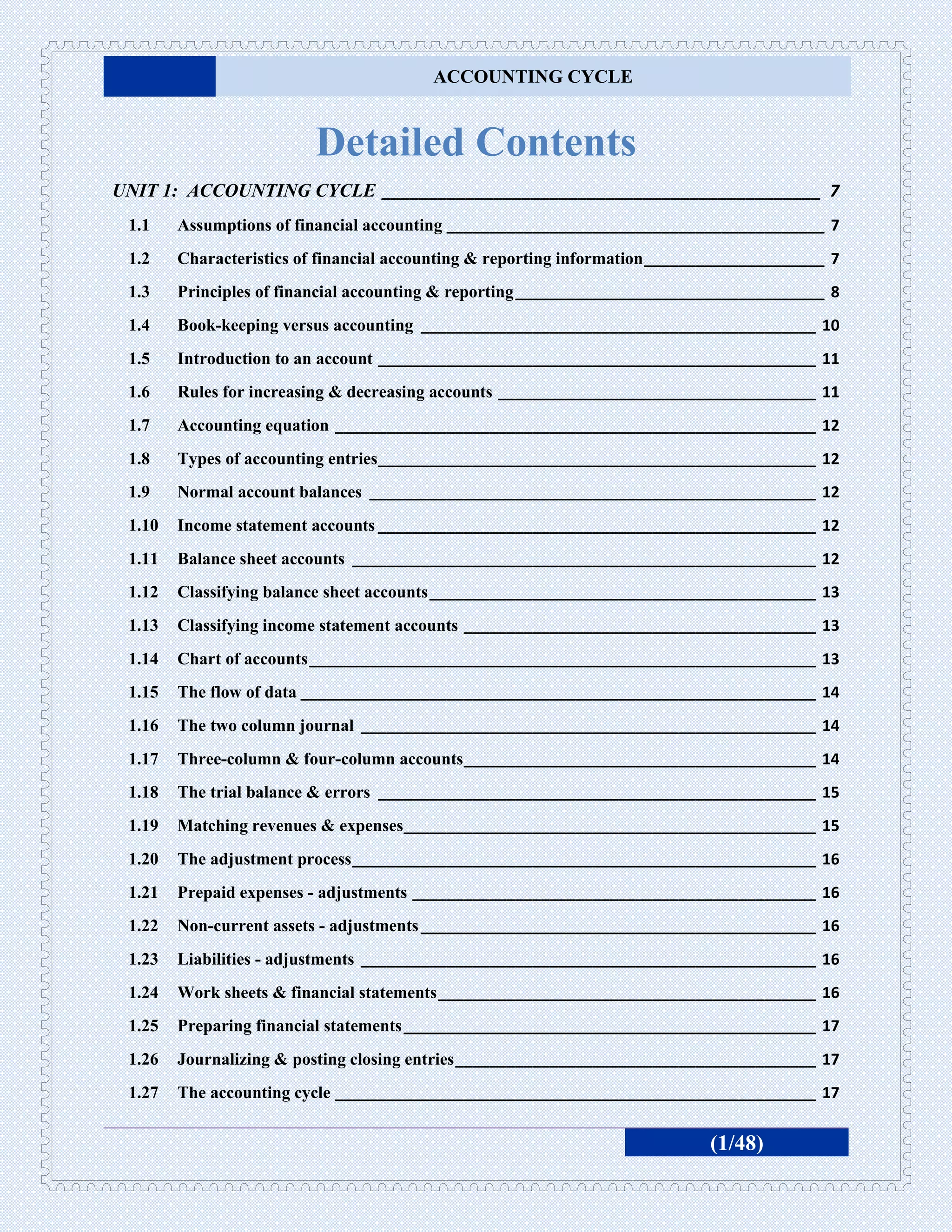
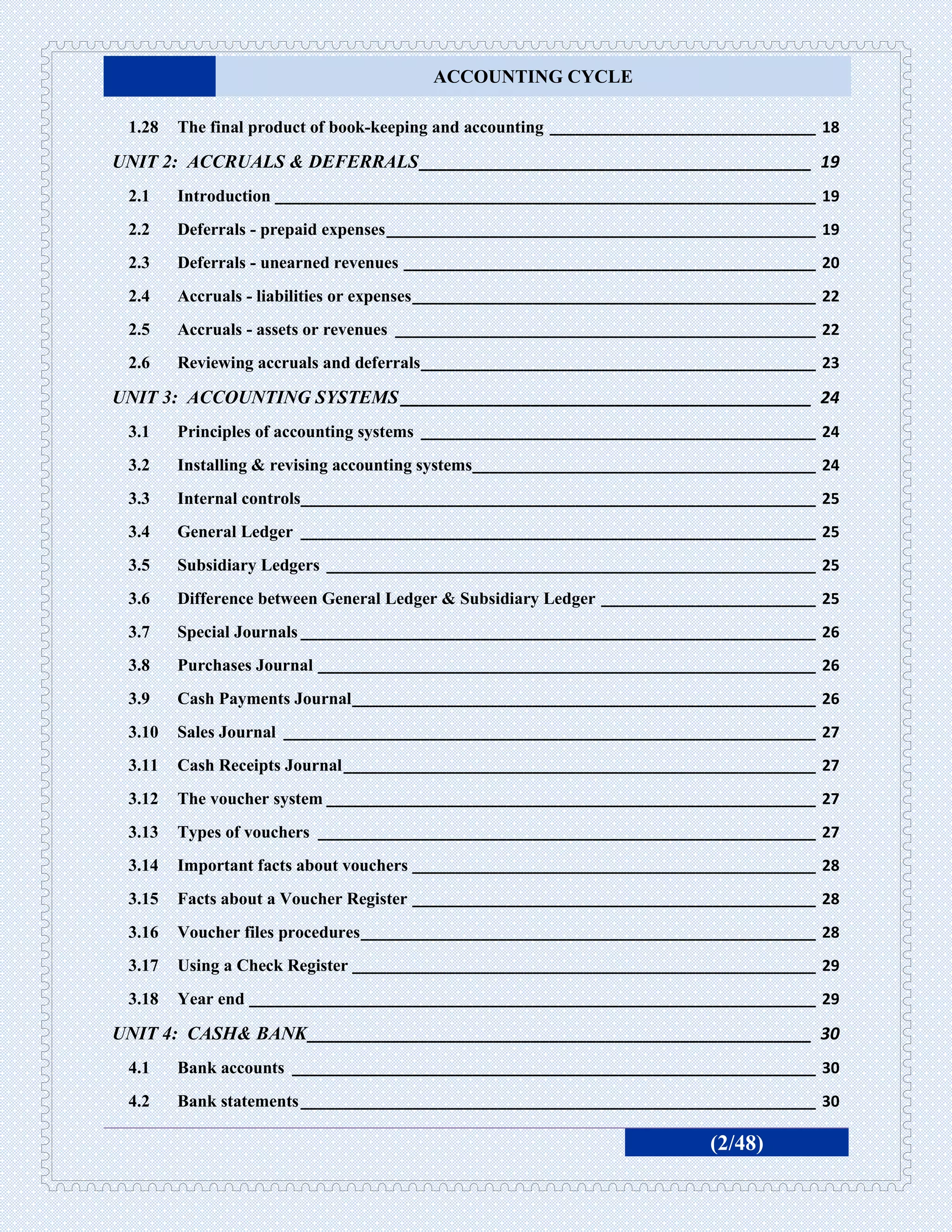
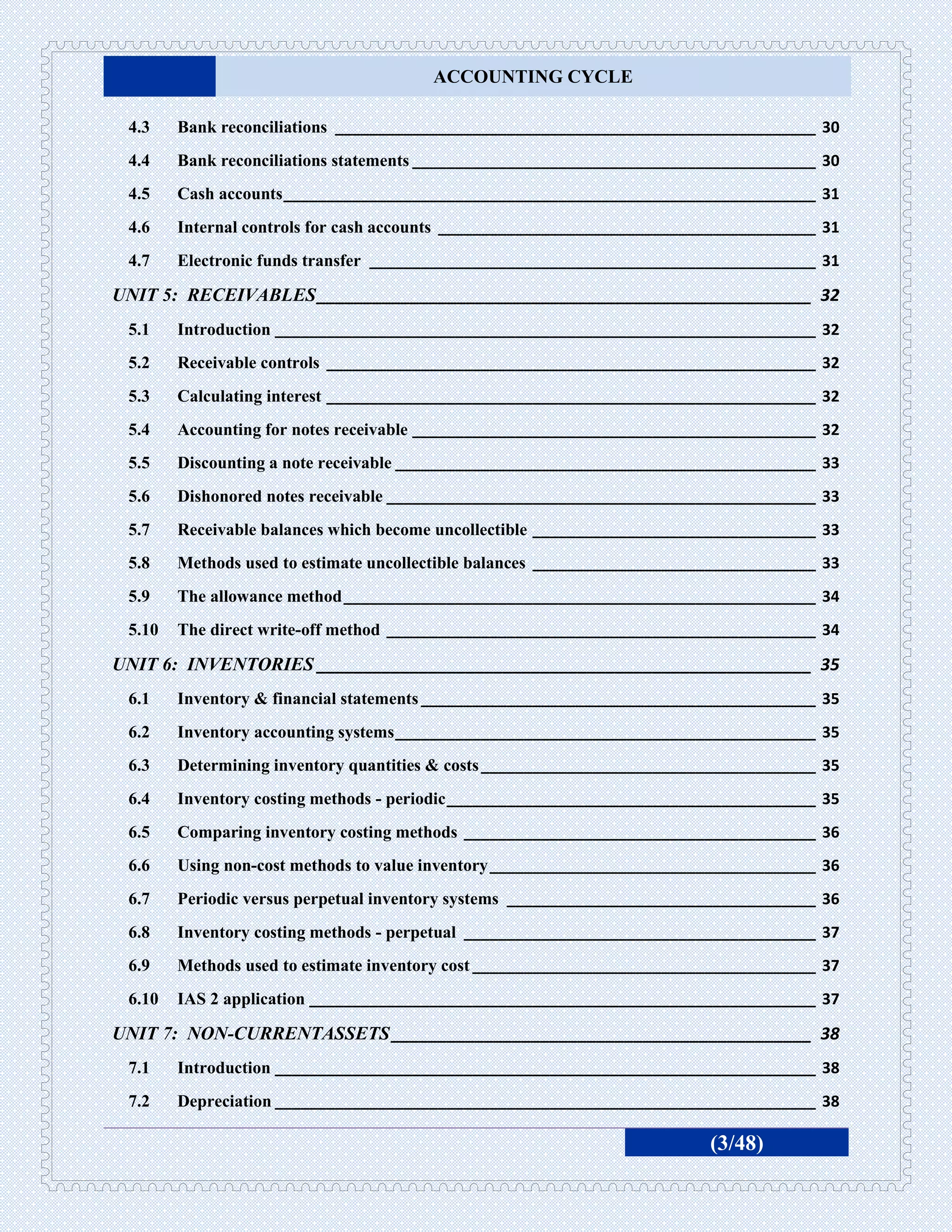
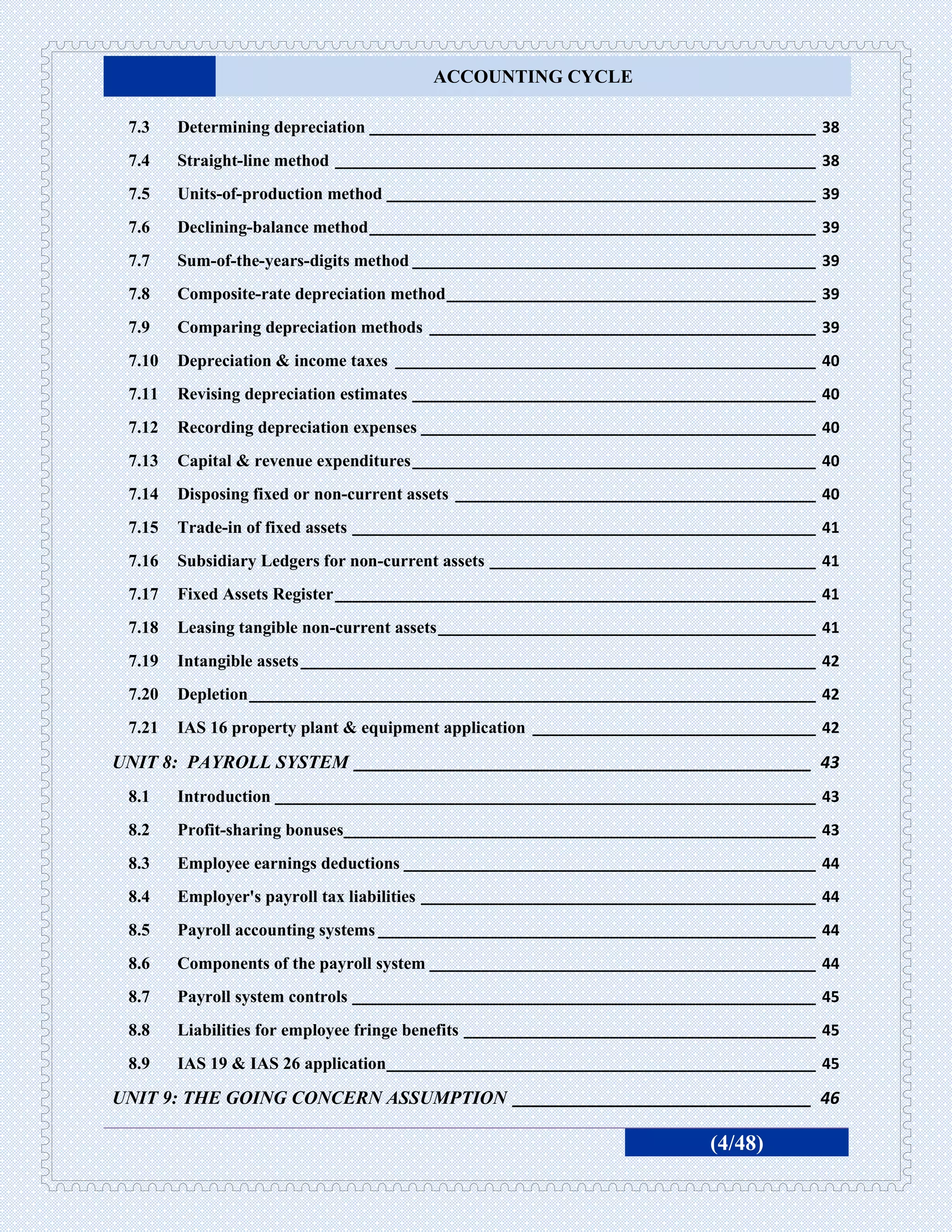
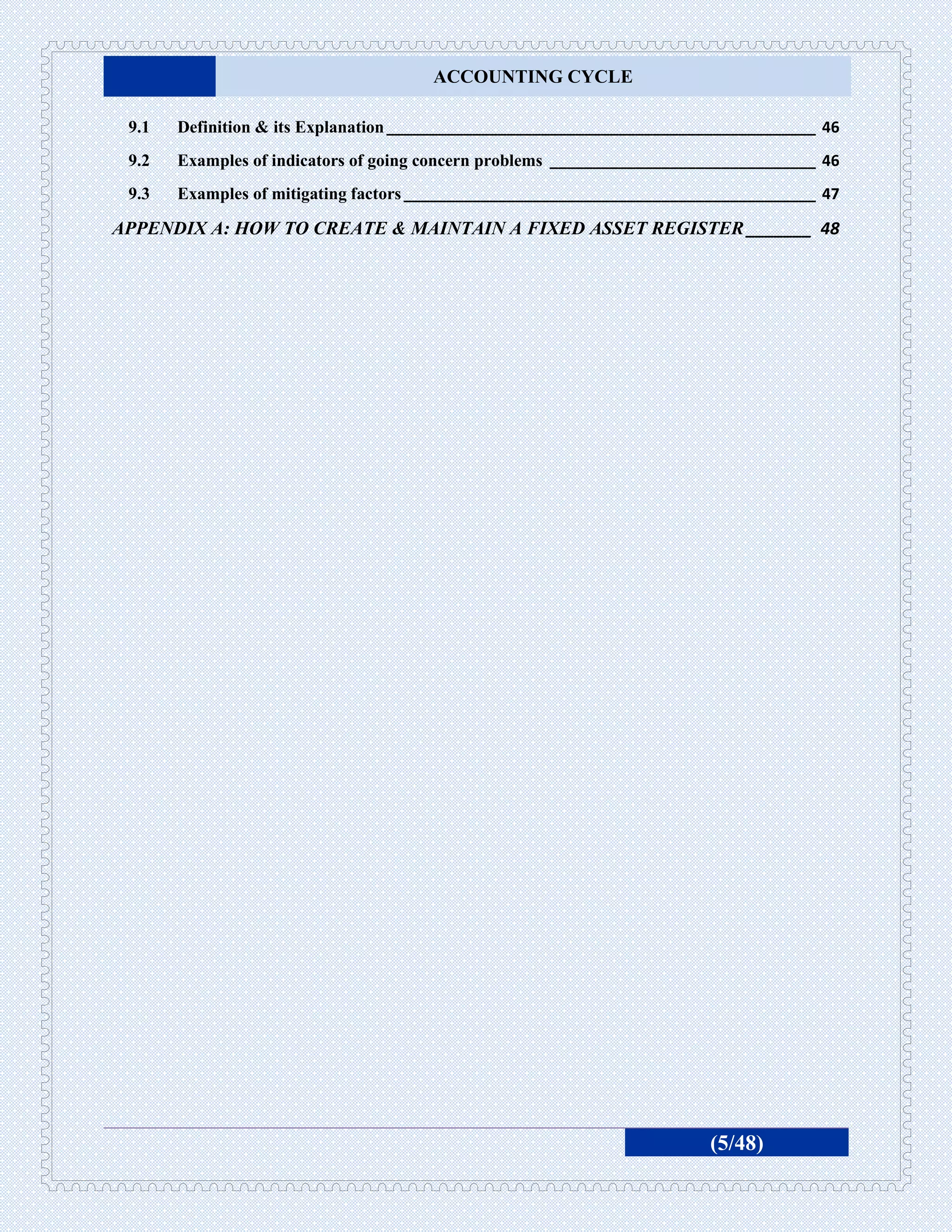
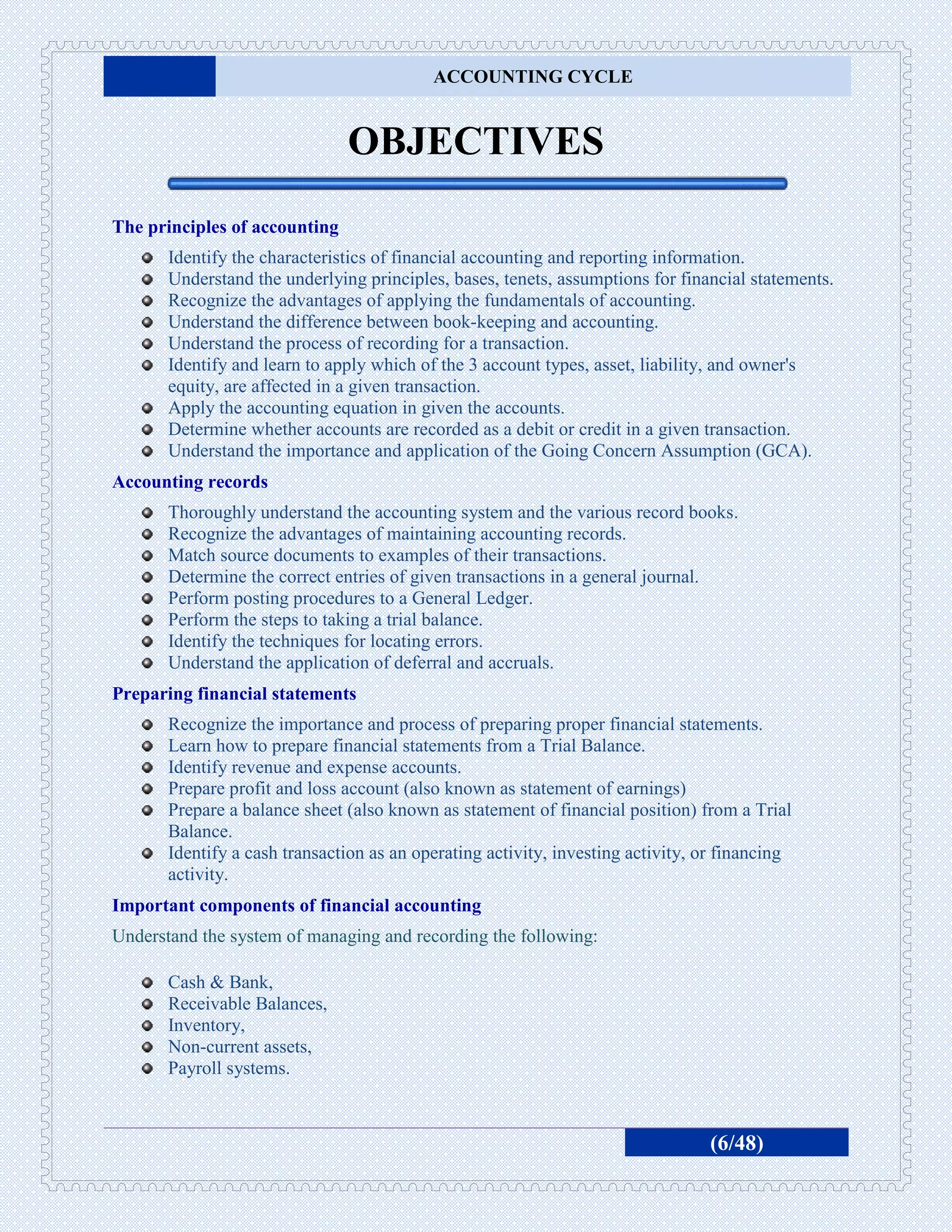
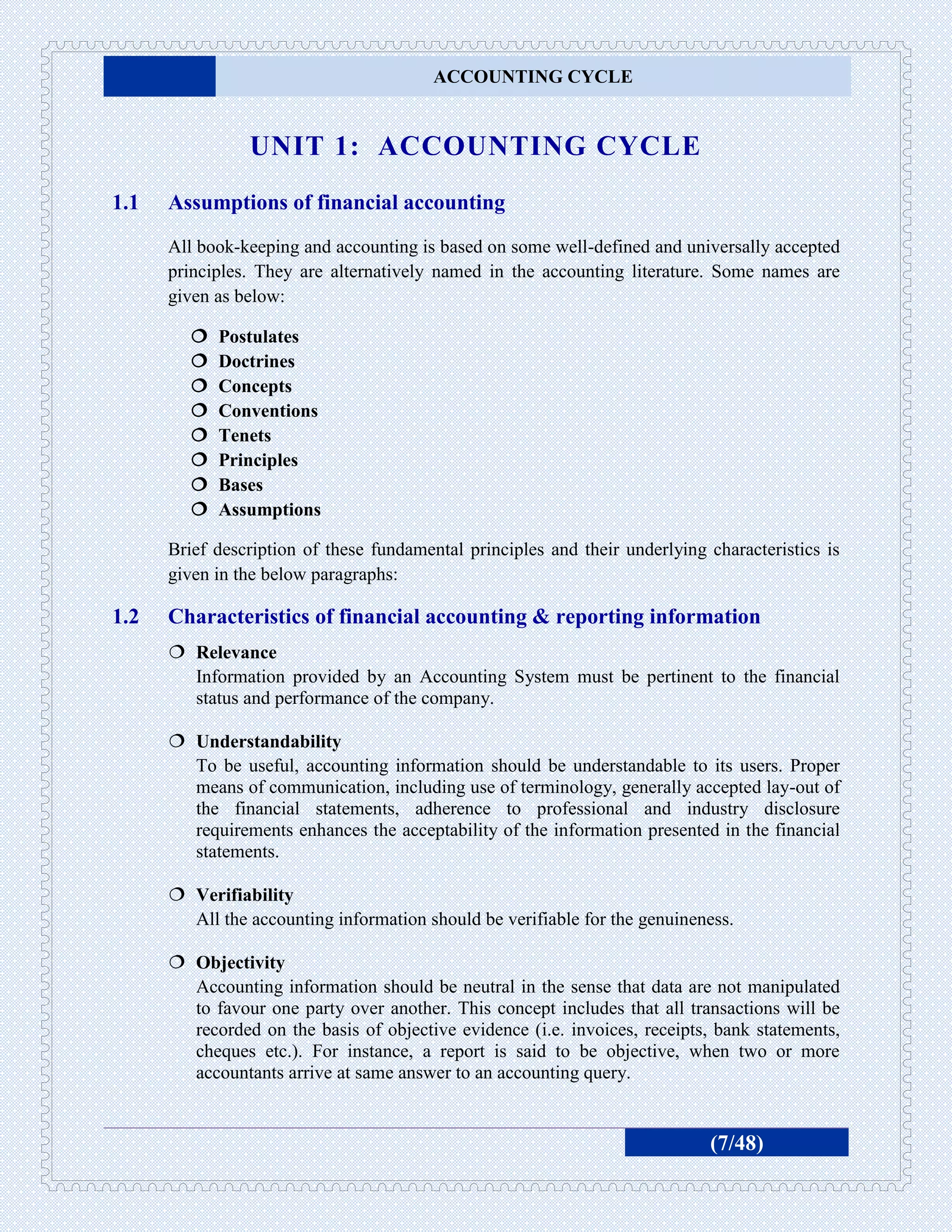
![ACCOUNTING CYCLE
Matching
For any period in which revenue is recognized, expenses incurred in obtaining that
revenue should also be recognized. For instance, sales price of merchandise is
matched with its cost on sale to third party.
Timeliness
For information generated by the accounting system to be useful for decision – making, it
must be received by the stakeholders soon after the close of the financial year. Any delay
in producing and presenting of financial statements would badly affect the decision
making capability of the company. It is because of this principle that all companies’ laws
in the world provide time frame for the production and presentation of this information.
Consistency
This principle refers to the use of the same accounting method from one reporting period
to another, so that proper evaluation could be possible over the periods of time.
Comparability
Financial reports/statements must be presented in a form that permits comparison with
other companies in the industry on equal basis. For instance, if all companies in an
industry apply IFRSs/IASs in the preparation of their financial statements, their
comparison can be made easily.
1.3 Principles of financial accounting & reporting
Disclosure
All information which would influence the assessment of the company’s health by
outsiders should be disclosed in the financial statements.
Conservatism/ Prudence
This principle can be understood from the following, ‘Record all losses when incurred
and defer all gains until they are realized’.
Separate Entity Concept
Business accounting and reporting is separate from the other personal properties and
other businesses of the owner.
Continuity/Going Concern Assumption (GCA)
The business is assumed to continue its operations for indefinite periods.
[Refer to the detail at Unit 9]
Stable Monetary Unit (SMU)
It is assumed that prices remain constant over time. Financial Statements are prepared
from historical cost rather than on current values of assets.
(8/48)](https://image.slidesharecdn.com/accountingcycle-130208083750-phpapp011-130217035216-phpapp01/75/Accounting-Cycle-9-2048.jpg)
